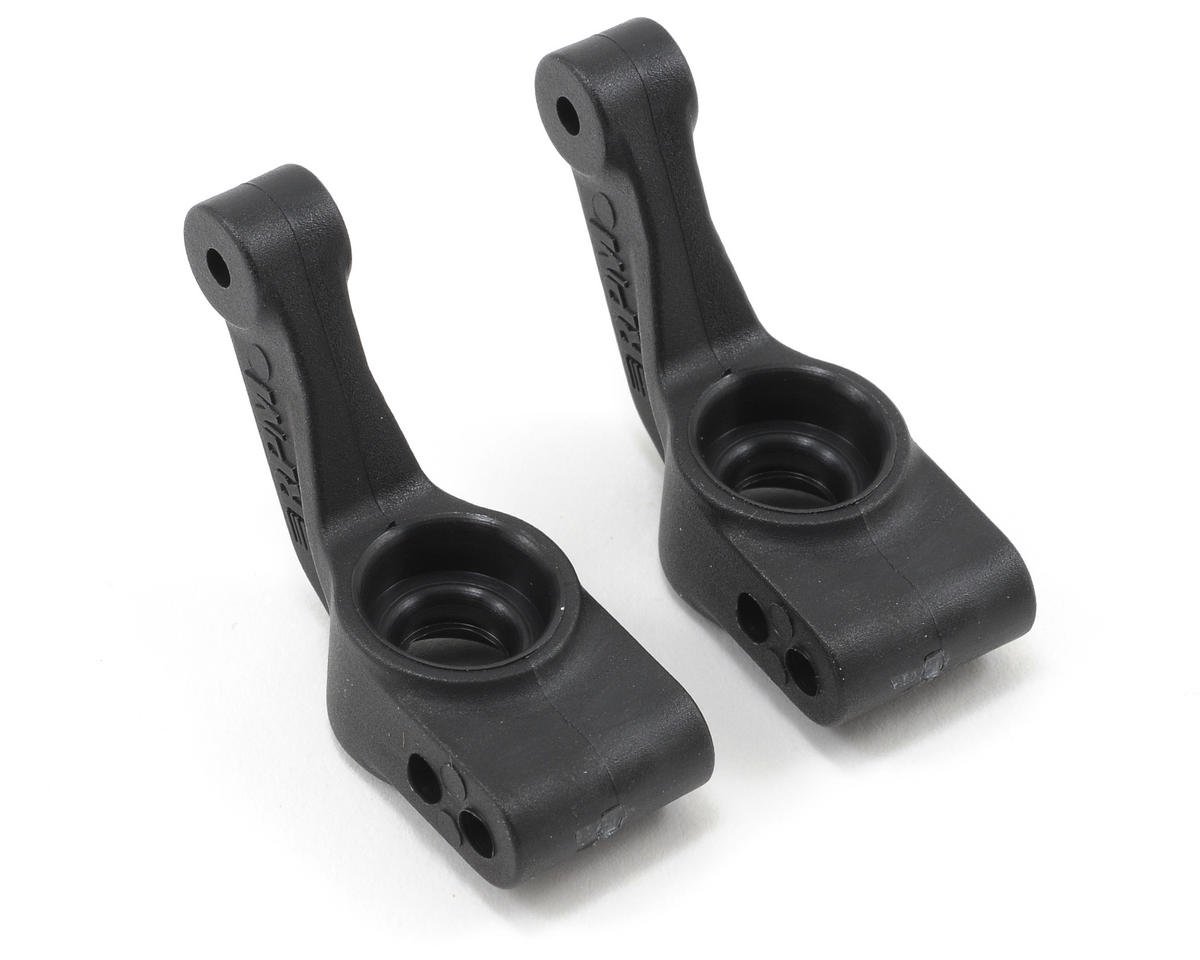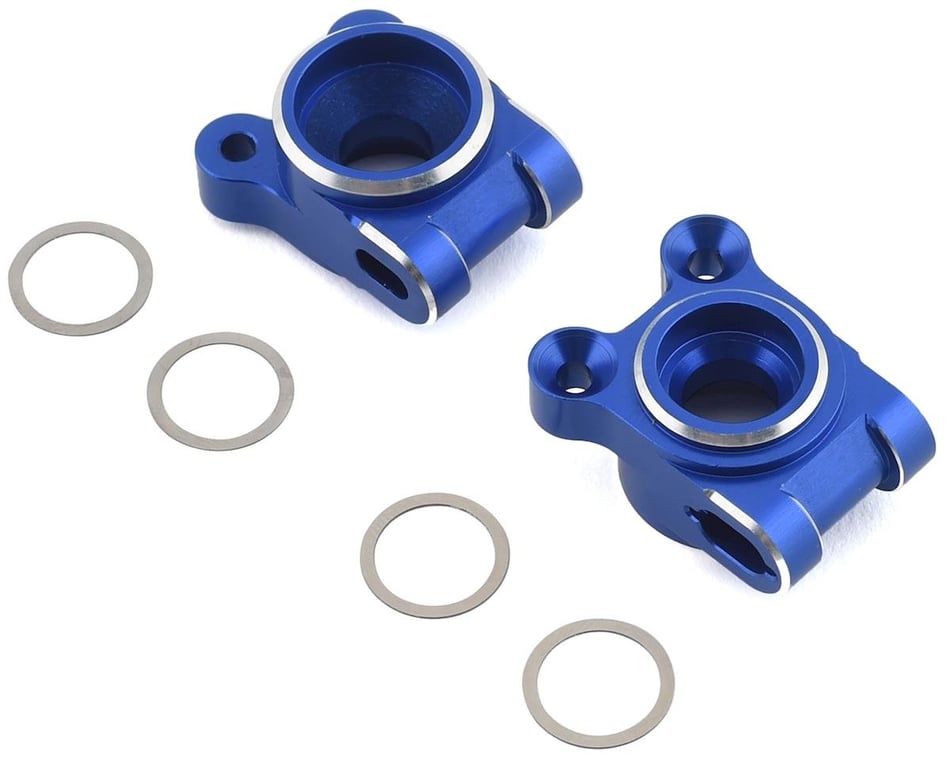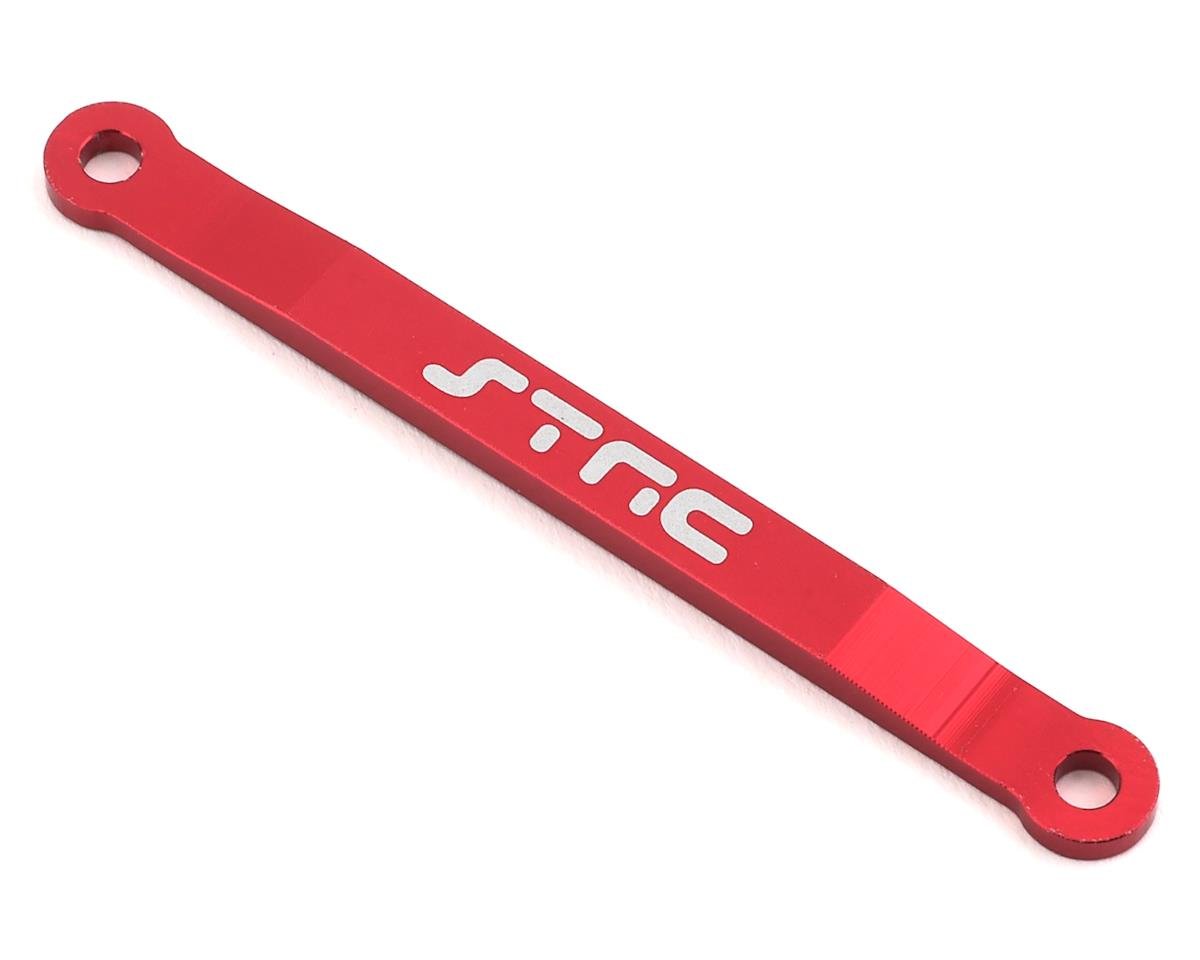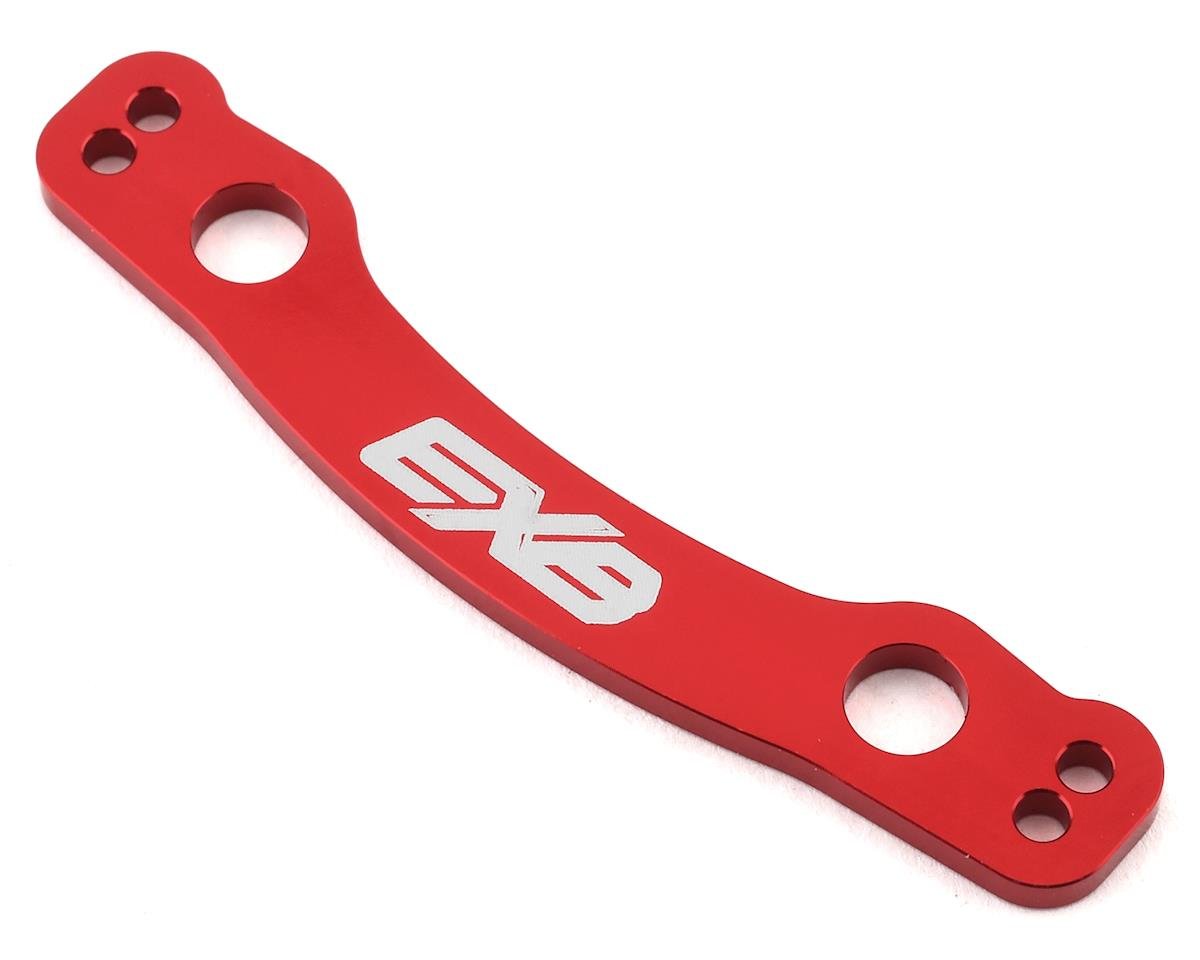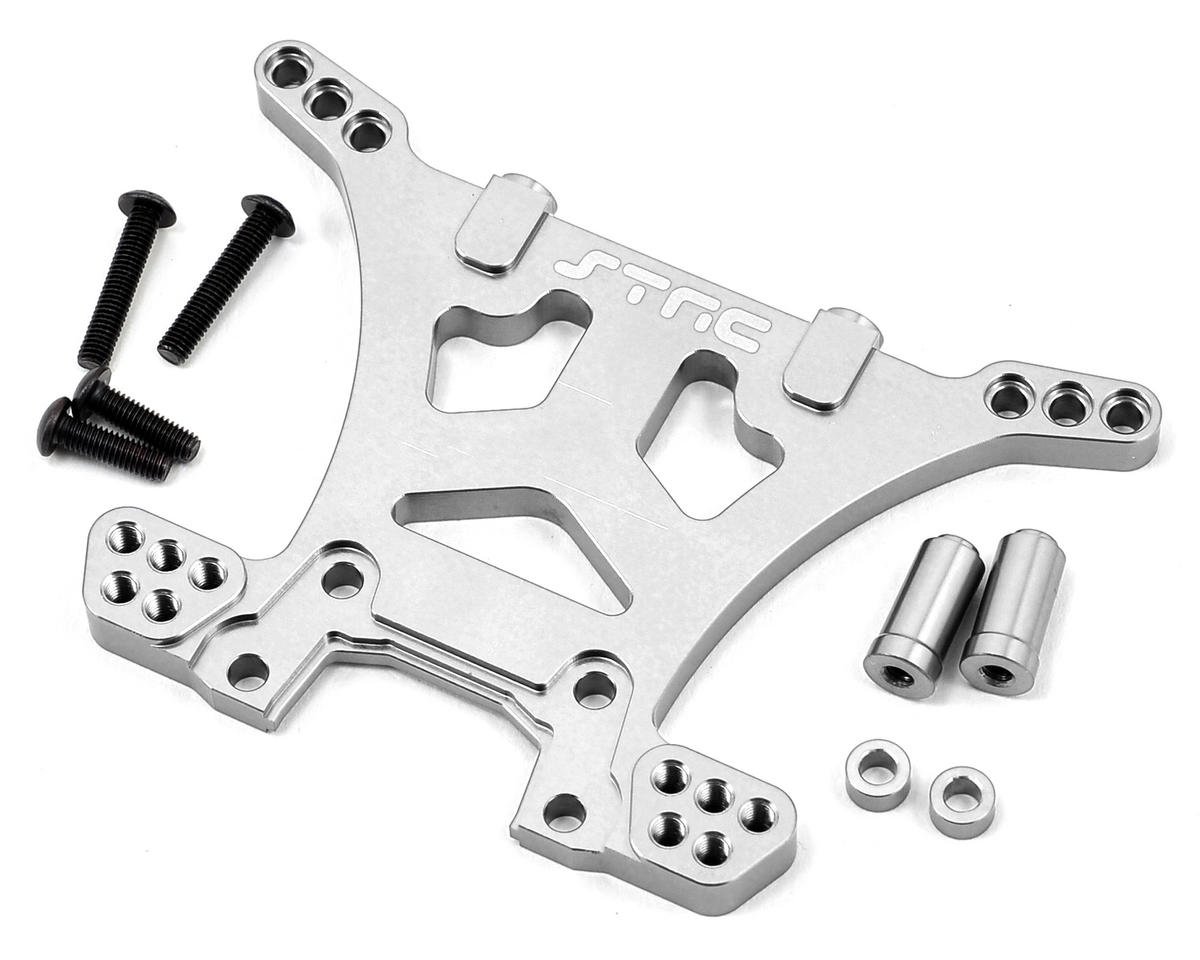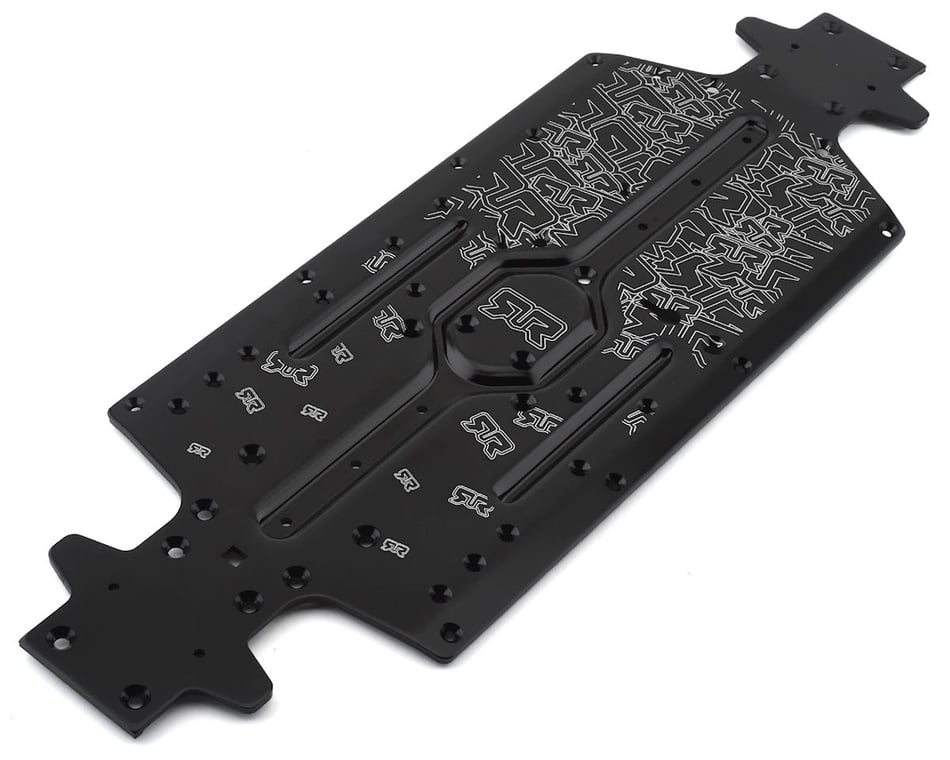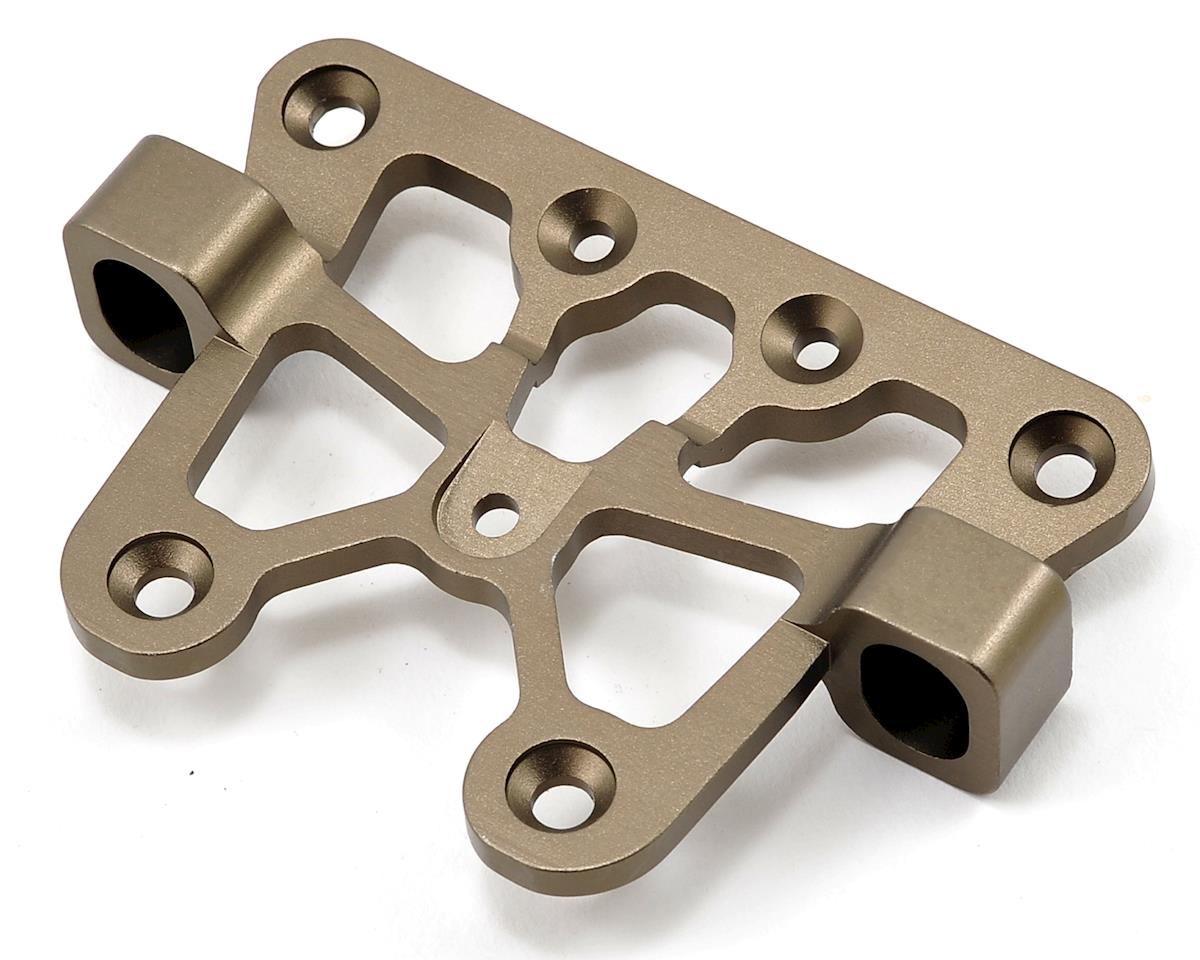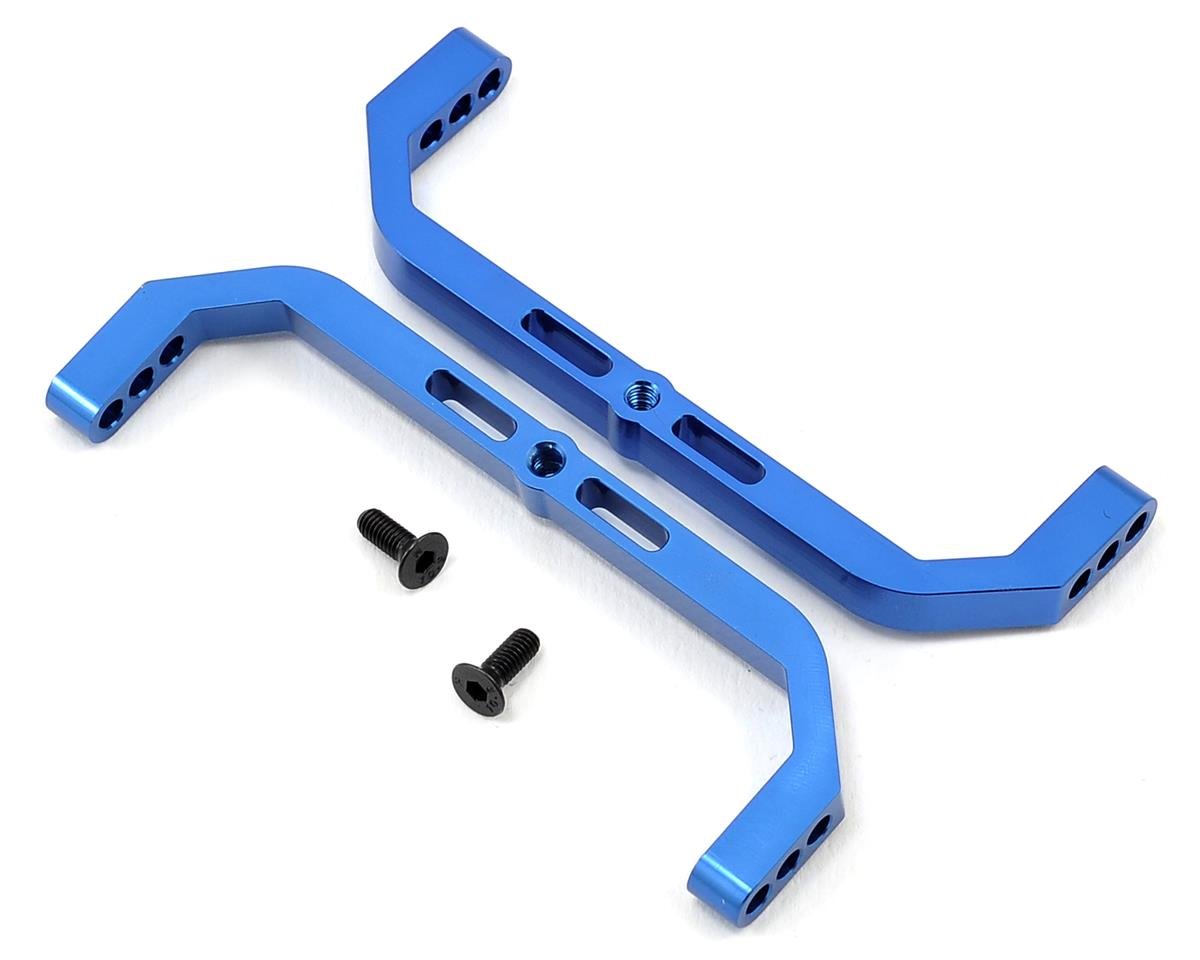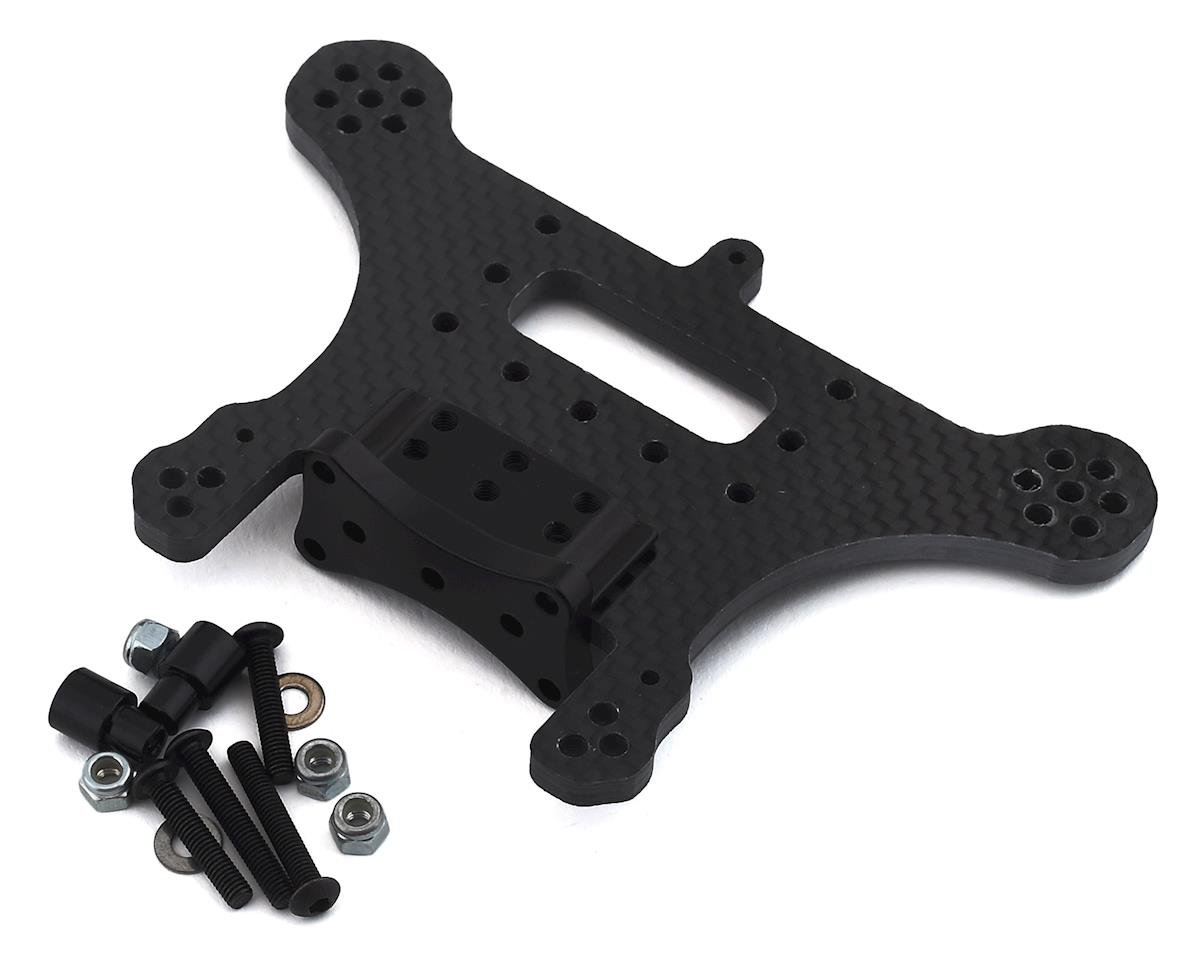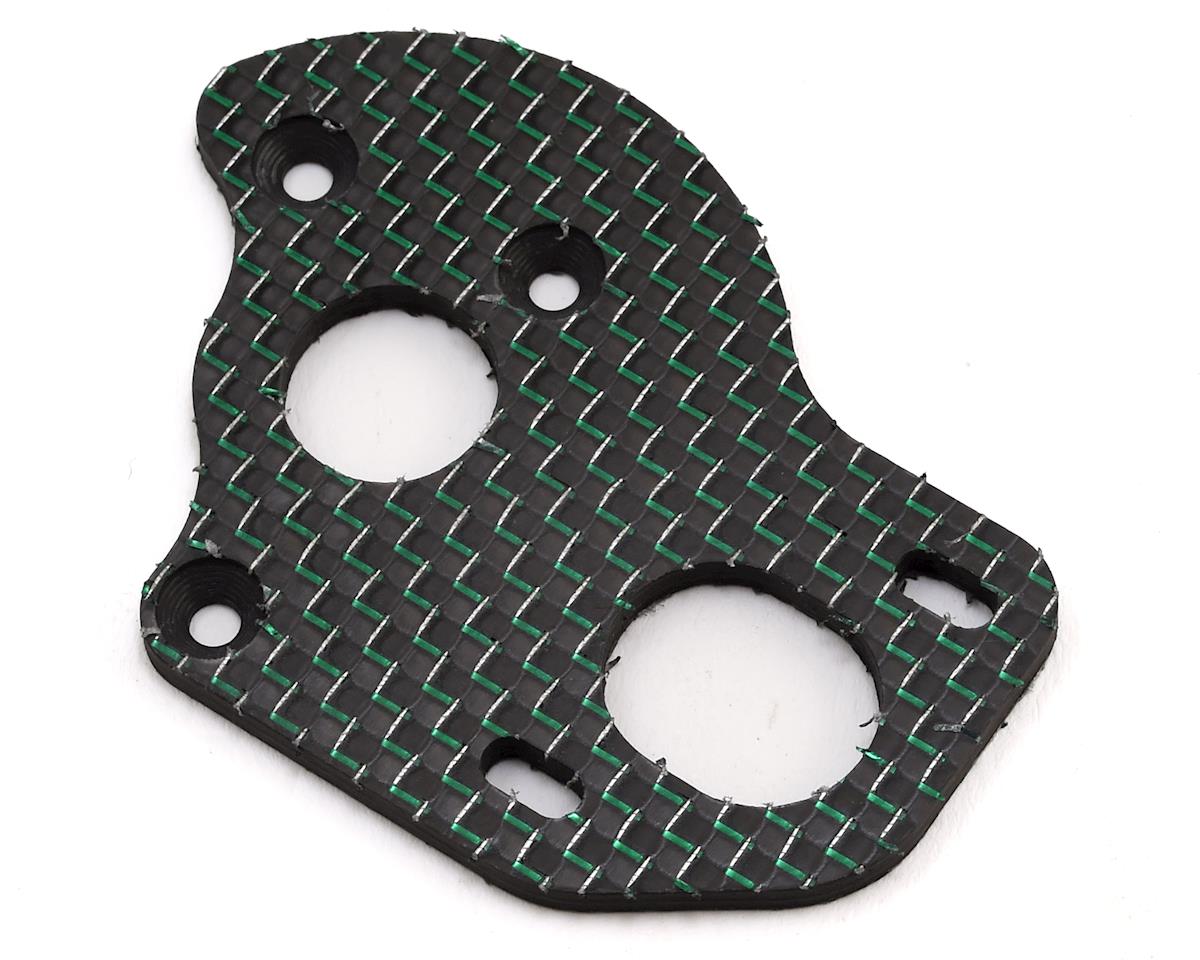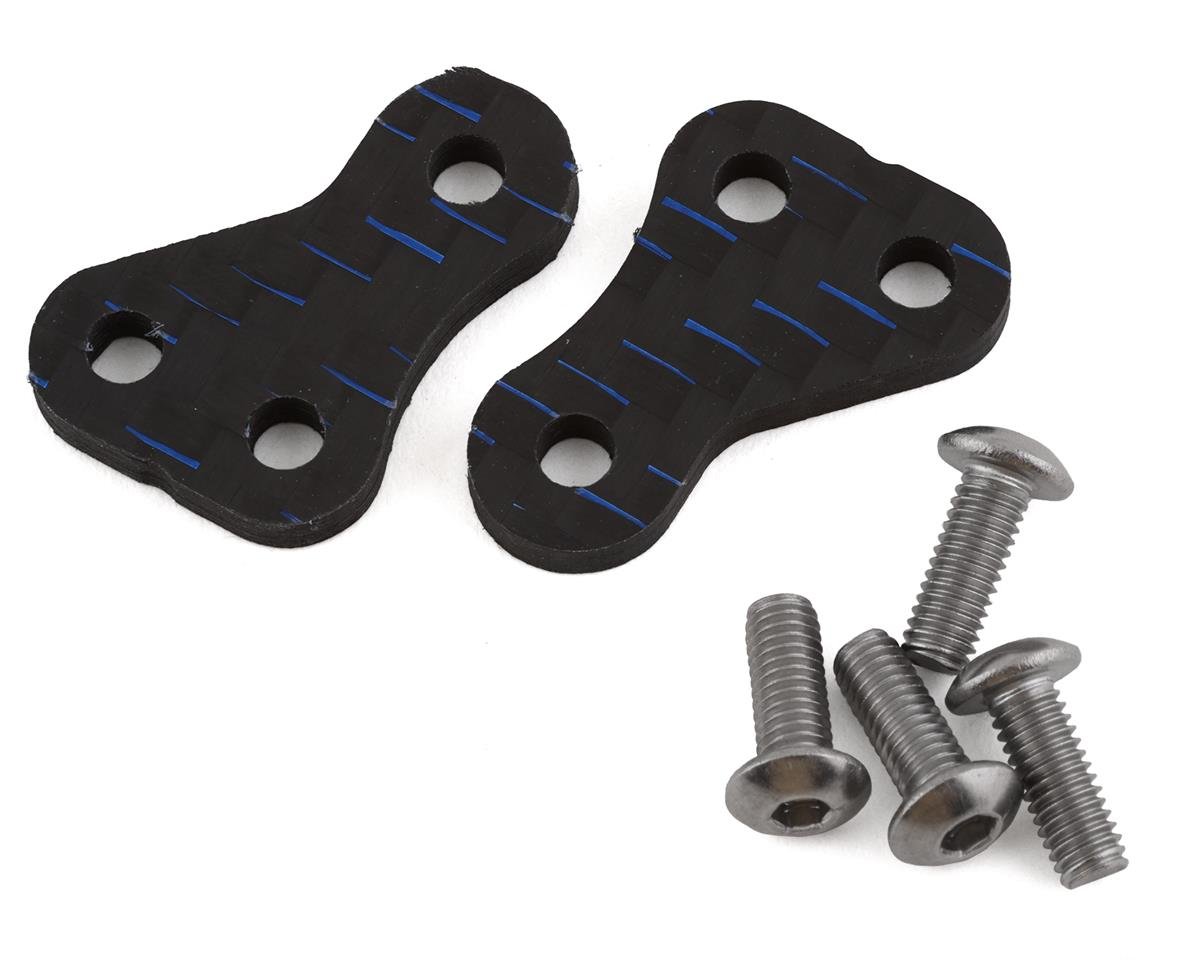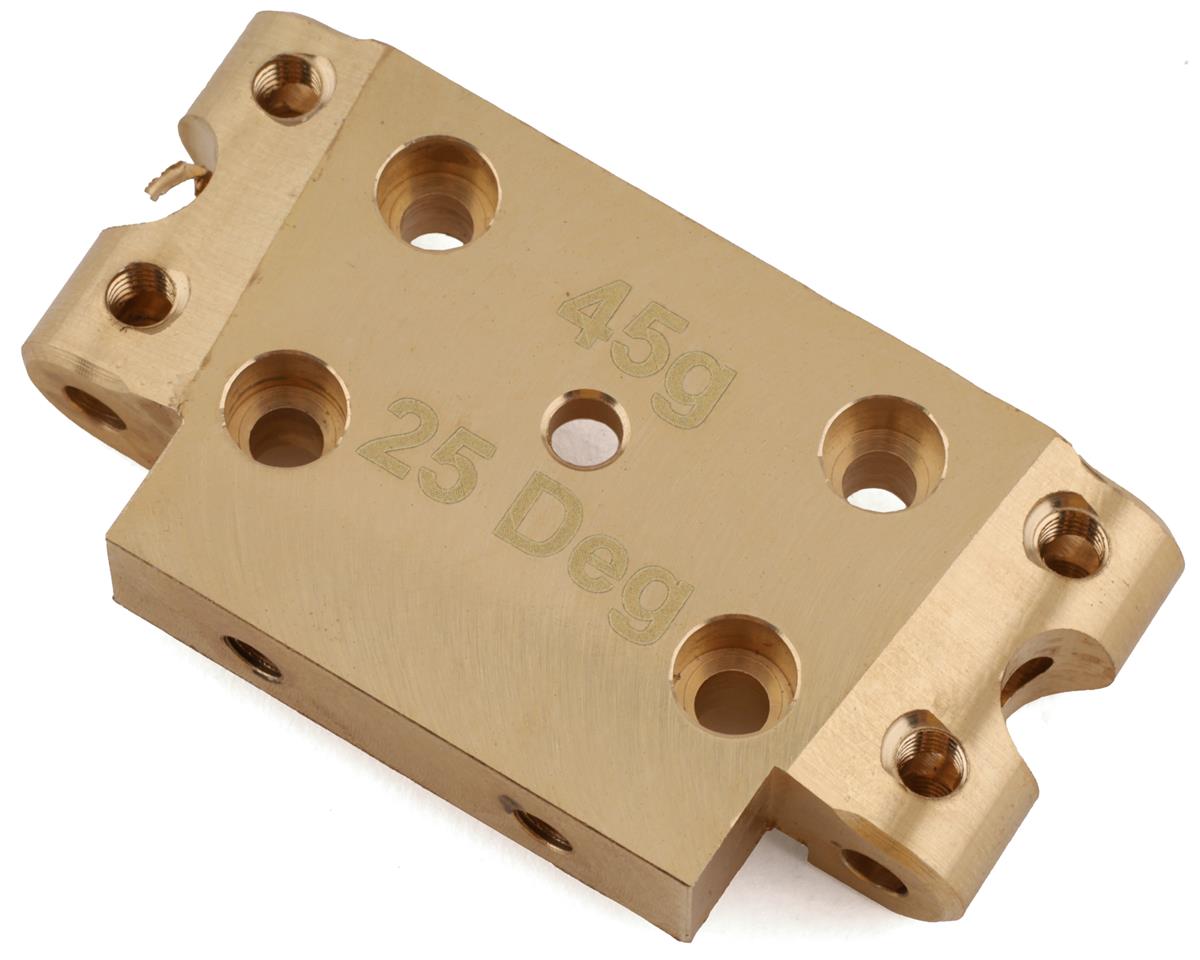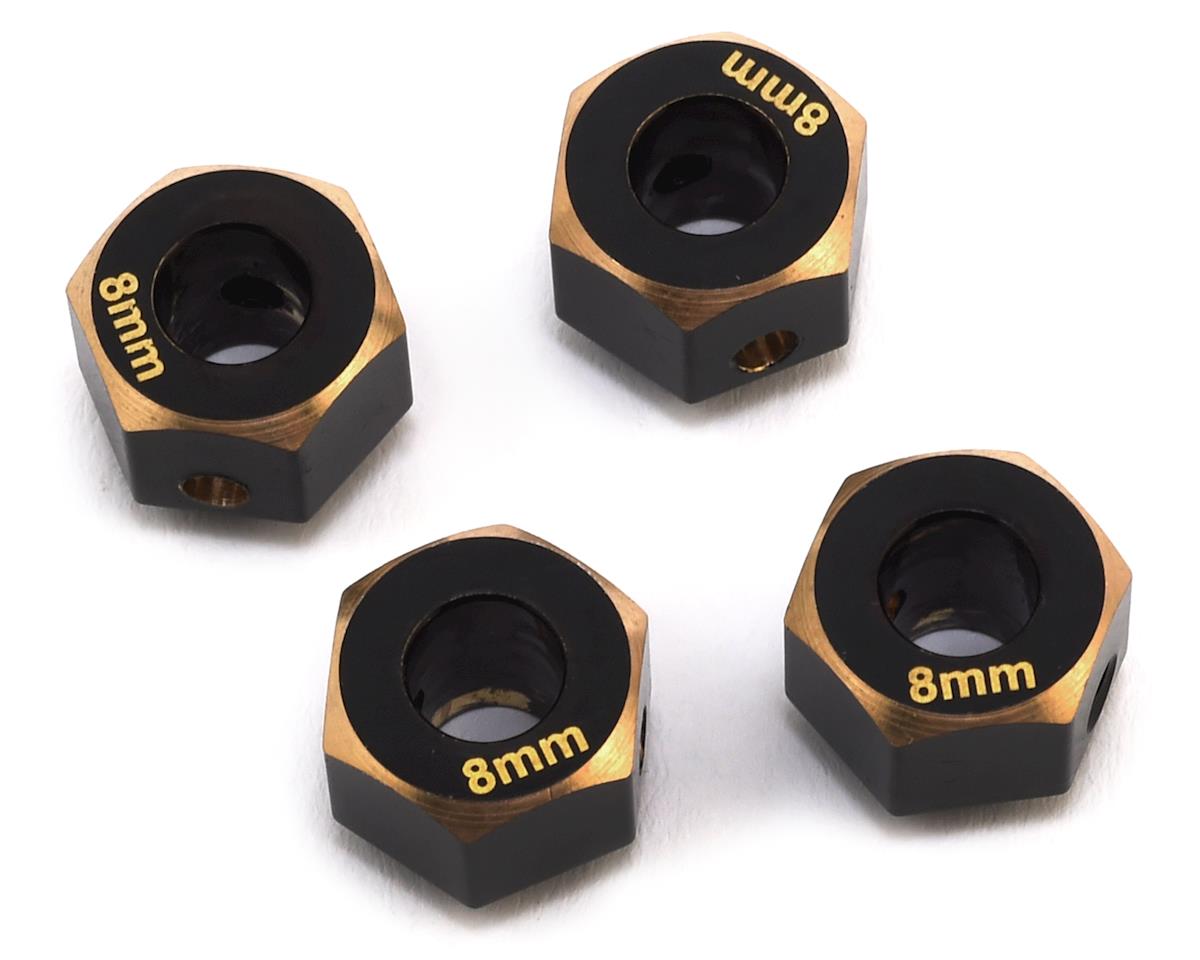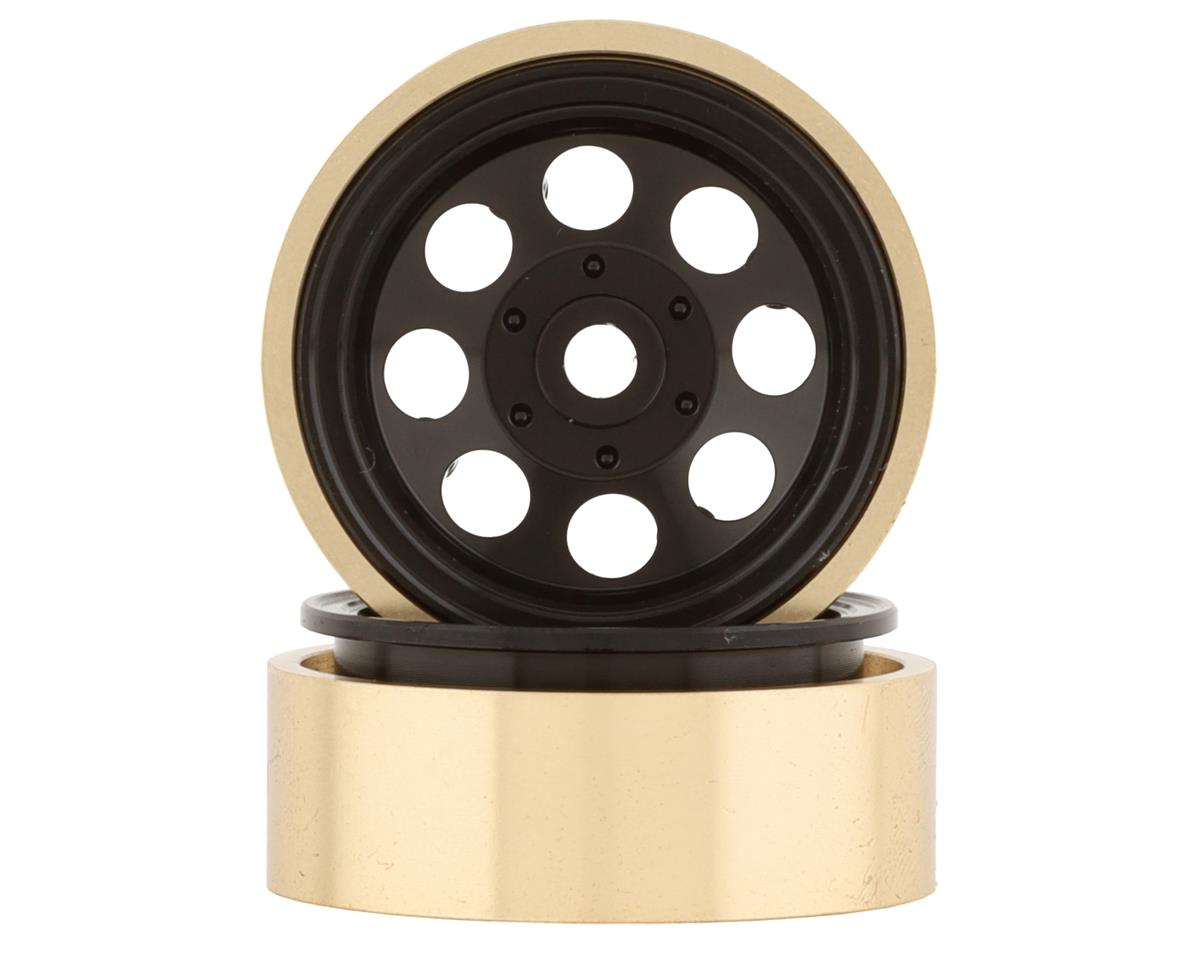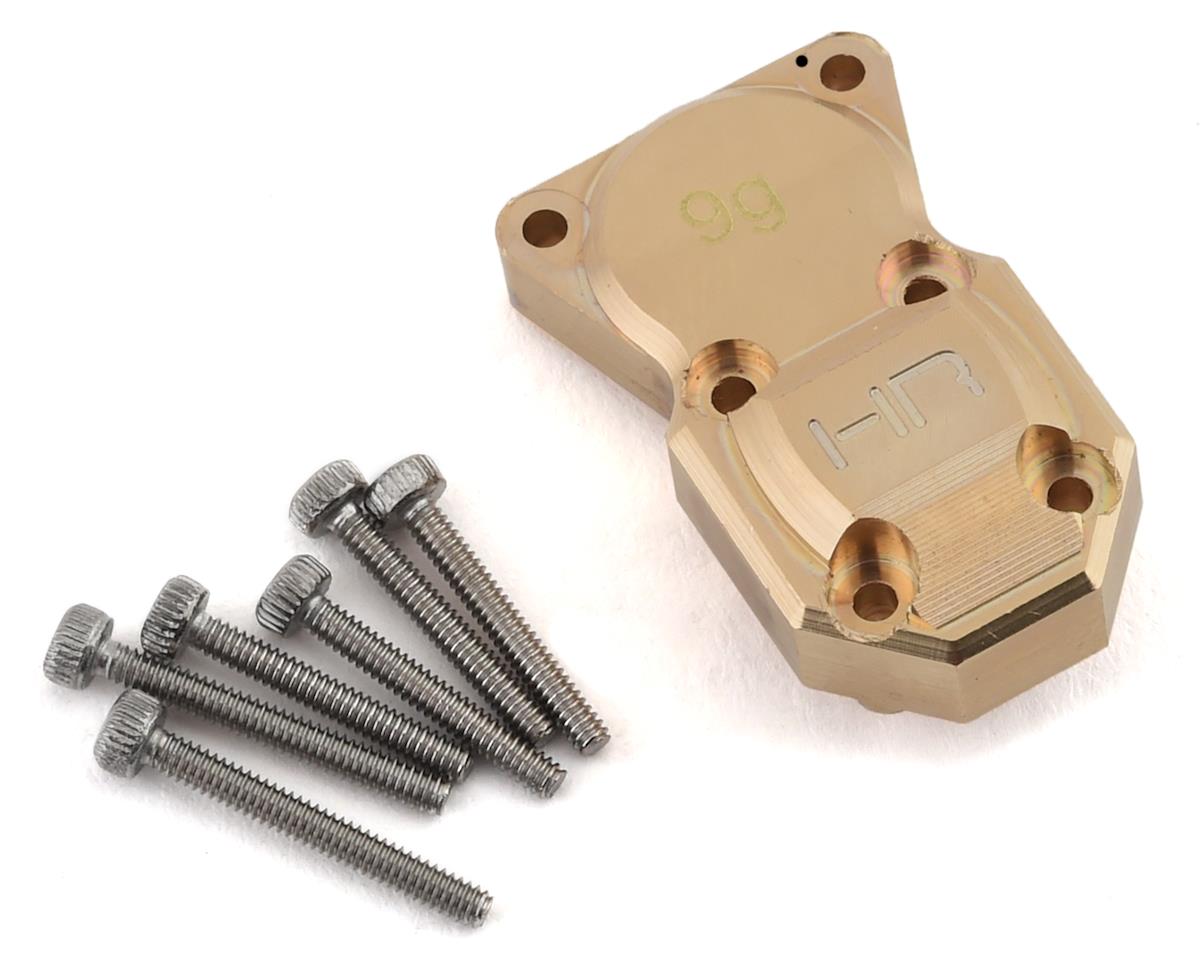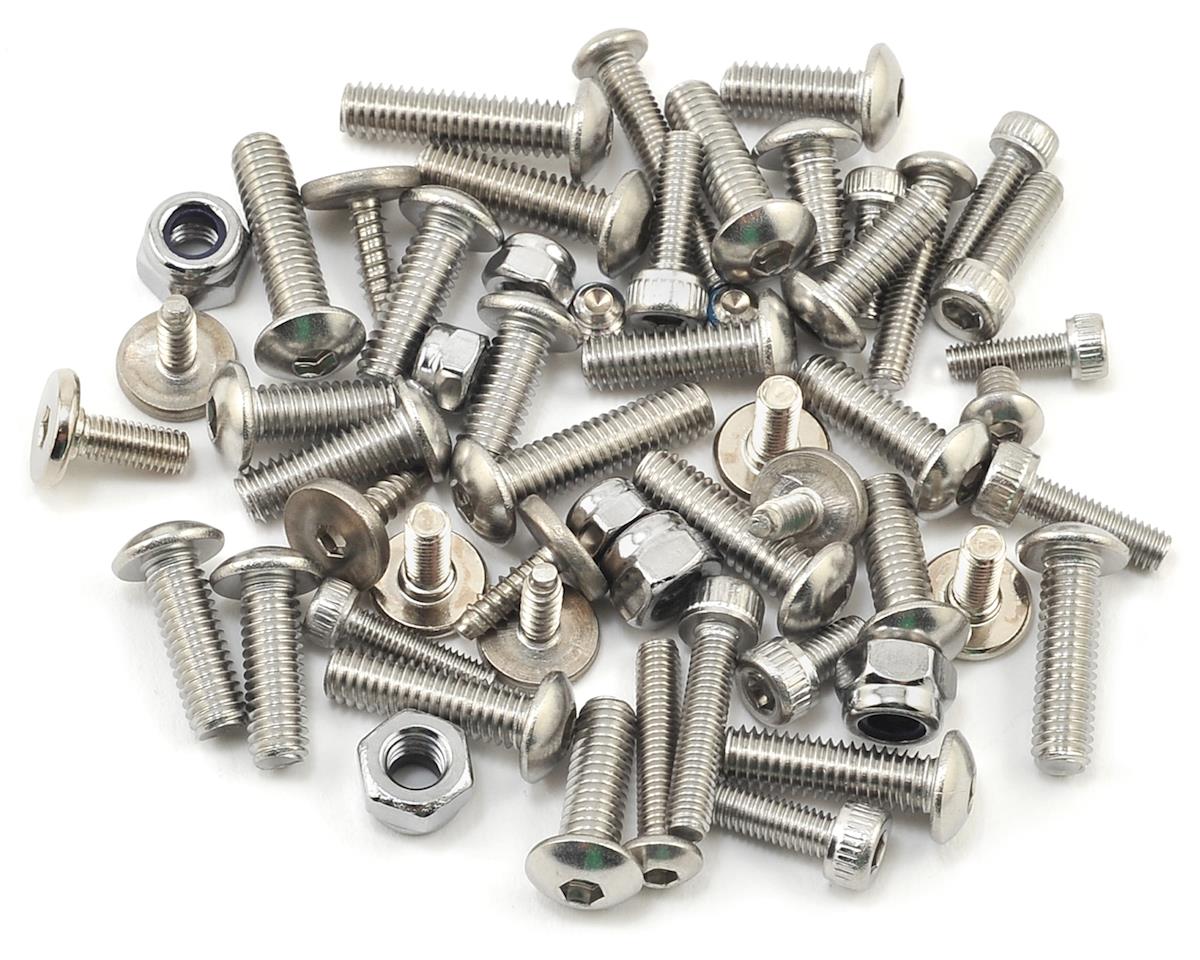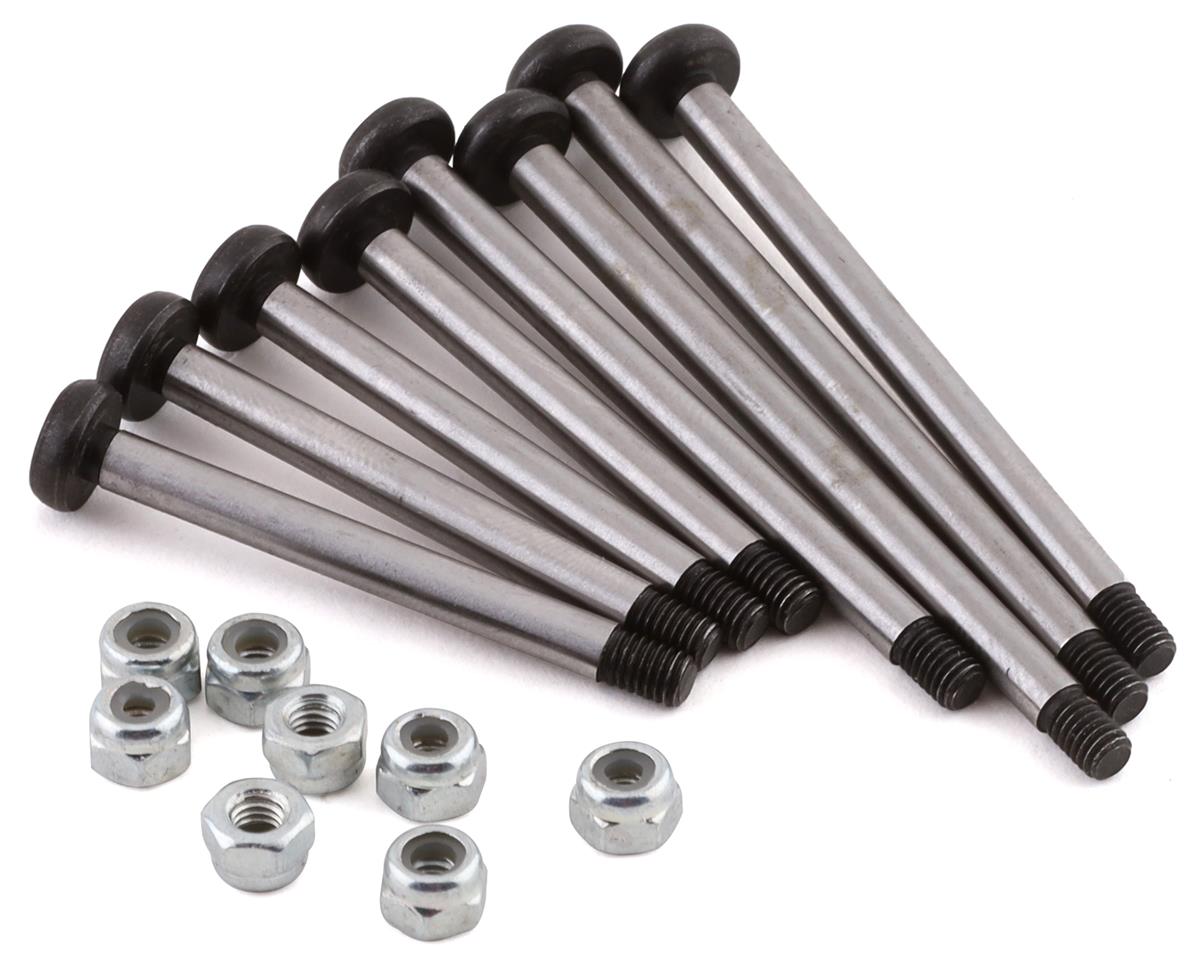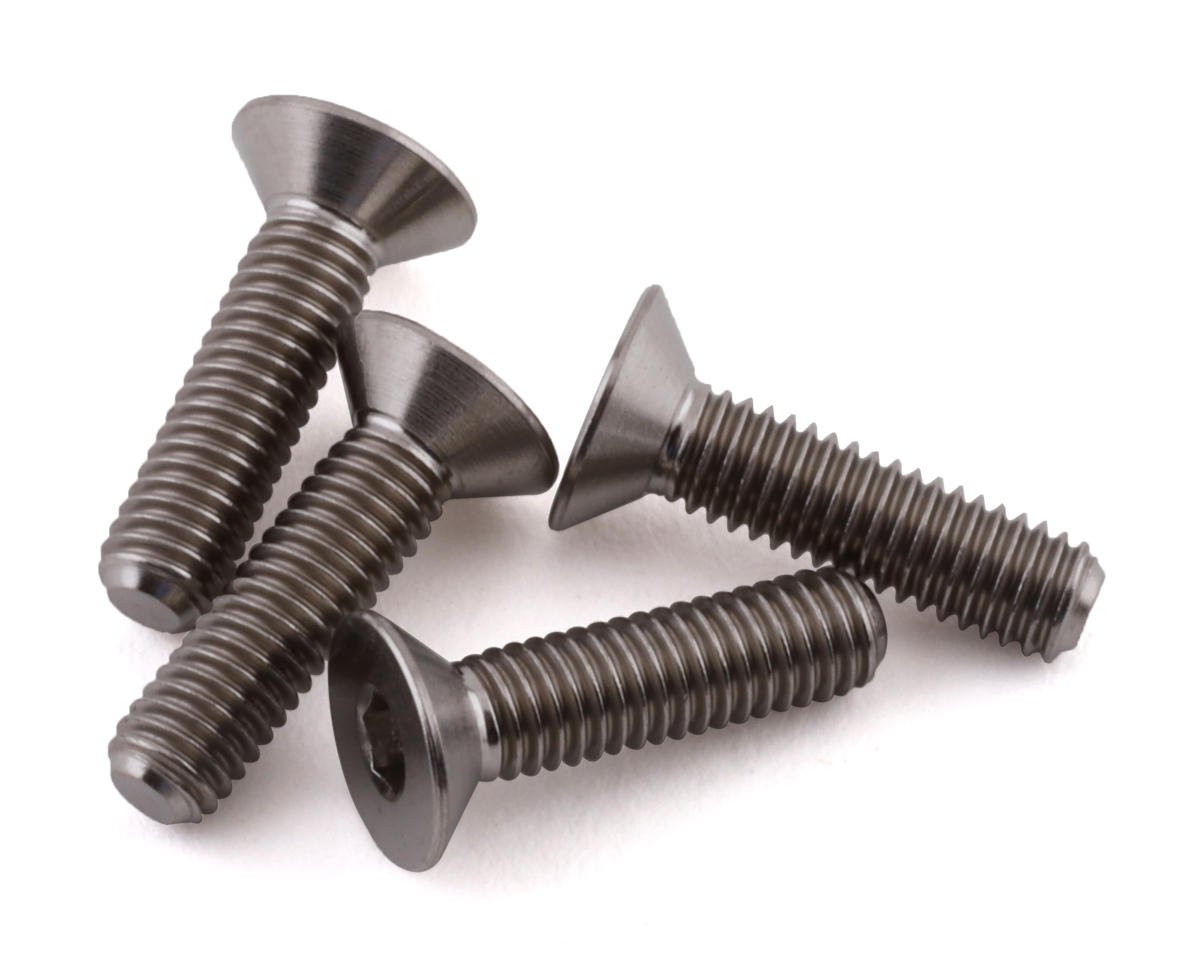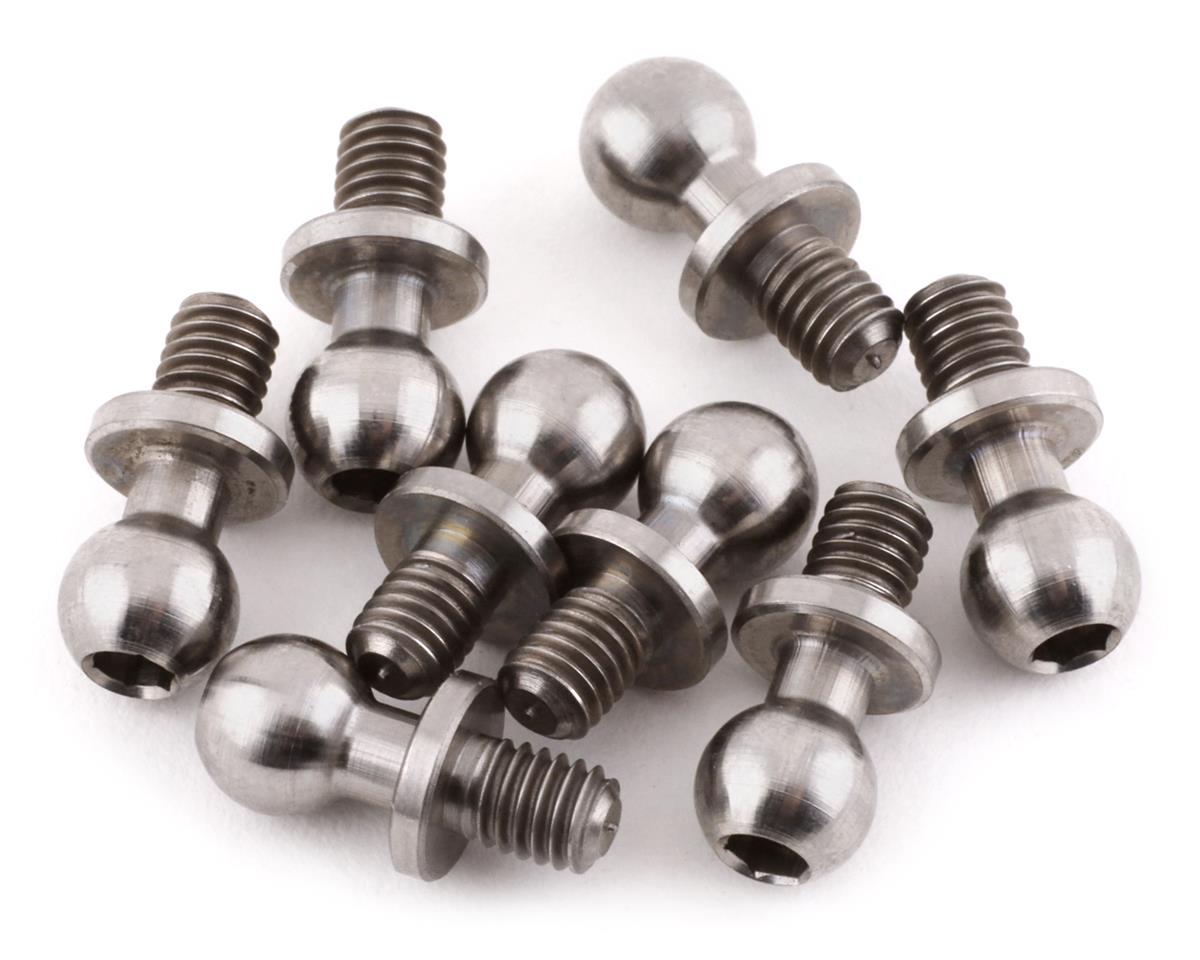RC Parts Materials - Plastic to Metal
RC parts and accessories are made of various materials, from plastics to metals. They all have unique qualities and properties ideal for different applications. This article talks about the materials you'll commonly find in radio control applications and why they are used.

It's common to find RC replacement parts made of plastic aluminum, carbon fiber, titanium. Brass and steel parts are also available for RC hop-ups. All of these different materials have their place in RC and offer something special, like being lightweight, or maybe being heavy, or perhaps removing flex from your vehicle or adding it. Now, before we dive into this, we should say that we will try to keep this topic simple. Materials, the elements, and the techniques used can be quite complex. So this is in no way a comprehensive guide to materials. It's just meant to be a quick overview of some of the materials used to make RC parts.
Plastic RC Parts
Plastic is a lightweight, inexpensive material that can be molded into just about any shape that you need it to be. In general, plastics have a fair amount of flex, so in an impact, the material can absorb that energy flex and then return to shape—although this isn't always the case. Plastics can be made in various mixtures or composites, so the quality varies from brand to brand.
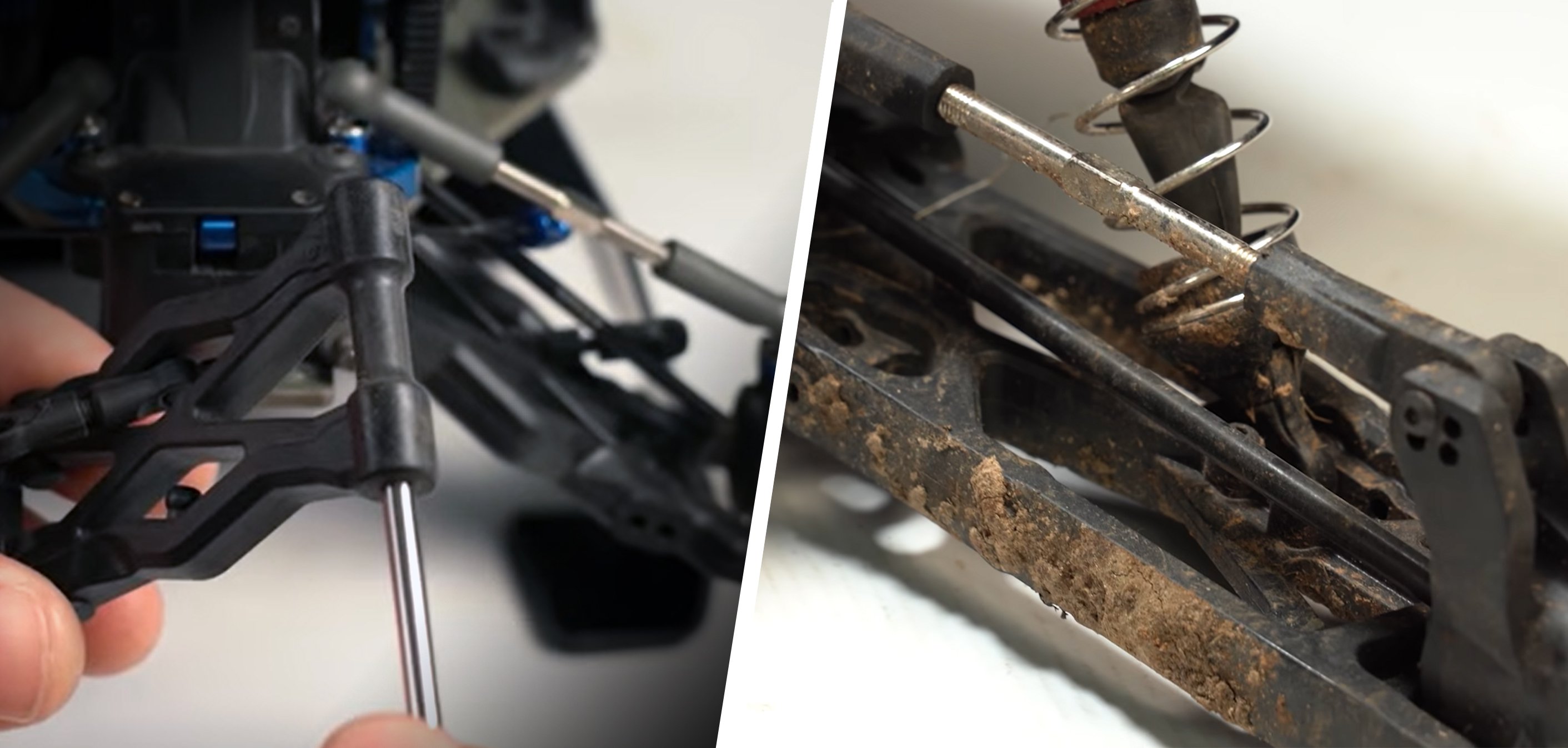
Plastic RC parts are also prone to just wearing out over time. Wear and tear take a toll on them, and they tend to lose their tolerance. So like in the suspension arm where you put the hinge pin through, that hole can kind of wallow out. Or in a hub where you'll put the bearings before you slide the axle through, those bearing holes can wallow out over time. You may also notice that your suspension parts have more play and wiggle after a hard crash. So plastic does have its limits before it snaps.
In general, plastic flexes and the amount of flex are generally affected by the outside temperature. For example, in frigid ambient temperatures, plastic stiffens up and becomes more brittle, and can be broken easier. However, when it's really hot outside, plastic does the opposite. It tends to loosen up, become a lot softer, and have even more flex.
RPM R/C Products, nylon-based plastic parts do a phenomenal job at providing a lot of flex to whatever the part it is. Because of the nylon, they absorb impact energy and then return to shape. As a result, they're perfect upgrades in specific applications, like suspension arms, hubs, and steering parts. These are ideal upgrades for parts that have already broken and the RPM part will be more durable than the plastic OEM part.
Aluminum RC Parts
Aluminum is a strong, rigid, lightweight metal, but it will not be as light as a plastic equivalent part. There are a lot of different alloys to aluminum. Some of the common ones in RC are 6061 and 7075. The stronger aluminum alloy is 7075, but it's usually reserved for chassis and things like that. In addition to the different aluminum alloys, there are also different processes to produce aluminum RC parts—like casting and machining.
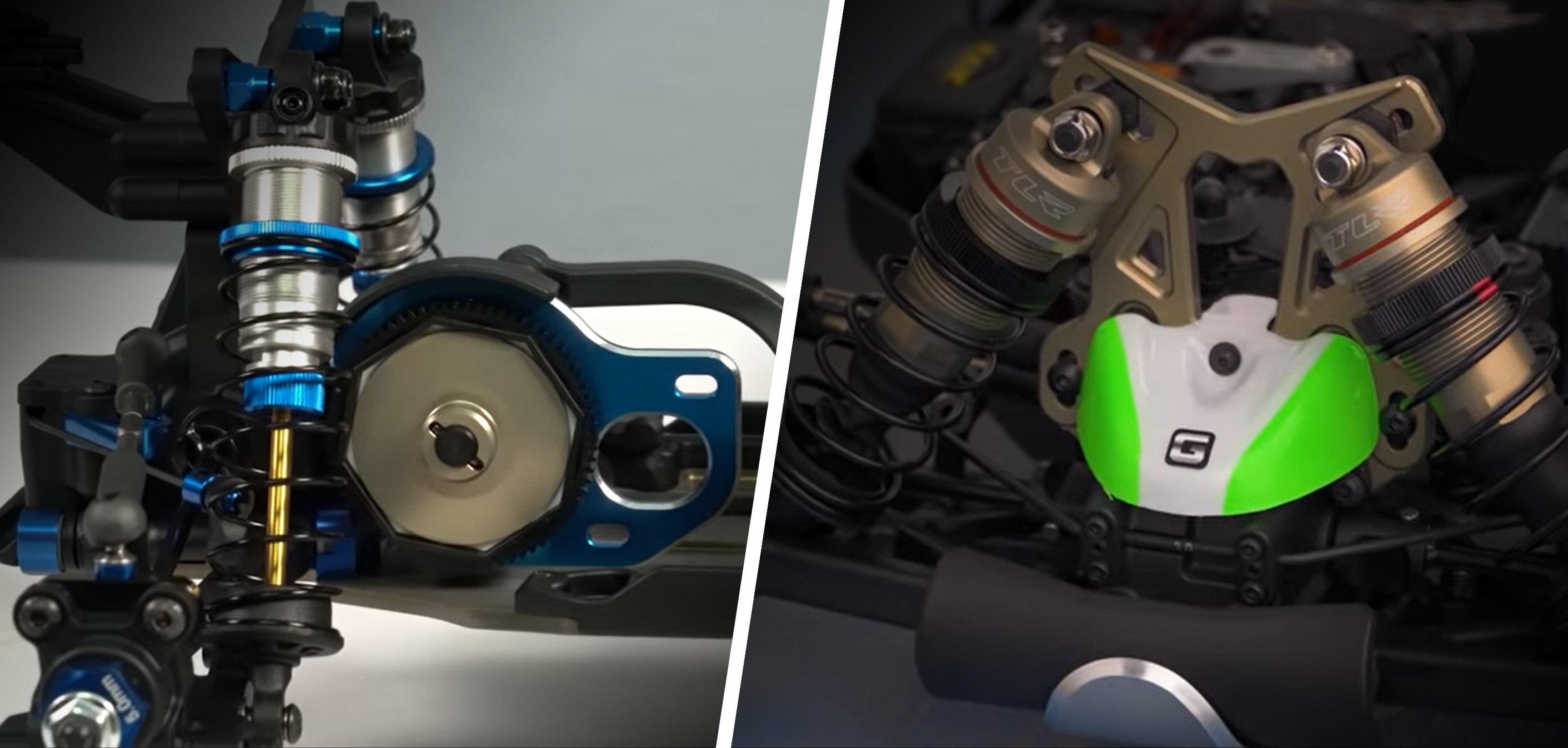
A machined part will be more expensive but also very strong. It's going to be stiff and rigid, and it's going to have tight tolerances to it because the computer process keeps the tolerances incredibly tight and exact, and it's not going to wear out as fast as a plastic part will. Unlike plastic, a machined aluminum part will not flex at all. It's going to stay stiff and rigid regardless of the temperatures outside. So when you crash, an aluminum part won't break like a plastic part. Instead, aluminum tends to bend on a "really hard" impact. It is possible to bend the piece back into shape, but it's been compromised, and it's going to be a lot weaker and more prone to bend in the same location.
Since aluminum can be much more durable and precise than plastic, they're great for things like your hubs, hinge pin blocks, or steering parts like the bell cranks and steering rack, where you want a precise feel. Aluminum servo horns are also really popular, and they're a great way to bulk up the strength of that steering system and avoid stripping out the internal spline on the servo horn, which is common with plastic horns.
You have to watch out when using aluminum servo horns and steering parts because if you have a servo that only has plastic gears inside, they may not be that strong under a hard impact. So if your tires are hit or jerk, those plastic gears will be the ones to strip out and break. Depending on your driving style, it may be better to keep using a plastic servo horn if your servo has plastic gears because it is a lot cheaper to replace a servo horn than a whole new servo.
Aluminum option parts can also be a great way to remove flex out of your vehicle, making them great tuning aids. Parts like aluminum shock towers, chassis, upper decks, OLC heads, top plates, chassis braces are great ways to stiffen up your platform and remove flex that the plastic counterparts would have provided. They're durable, and they look great too. In addition, you can get aluminum option parts in a variety of different anodized colors, if you want a particular look or style.
The last thing we want to mention about aluminum is that it's a great heat conductor, so aluminum tends to want to absorb heat away from a heat source. This is why you see aluminum used as motor plates and heat sinks in RC cars and trucks. Aluminum can be perfect in high heat situations or applications, but it is important to note that an aluminum upgrade part will be more expensive than plastic.
Carbon Fiber RC Parts
The following material is carbon fiber, consisting of tons of carbon bundles held together by epoxy, then layered to make flat sheets of various thicknesses. These flat sheets are used to make chassis, shock towers, upper decks, and steering parts—really any flat parts, can be made out of carbon fiber.
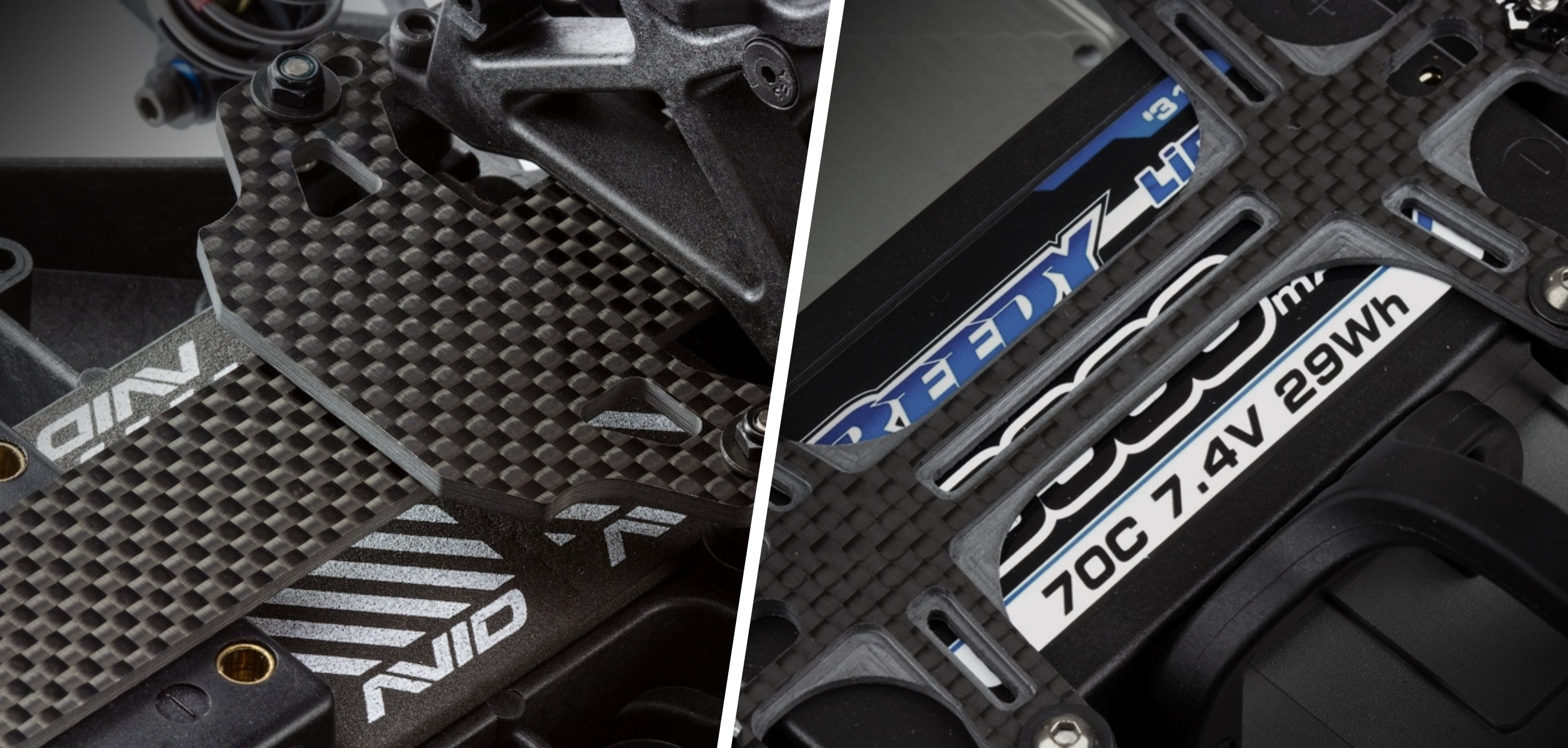
Carbon Fiber RC parts are generally more expensive than plastic, but they will be more lightweight than the equivalent plastic part. Carbon will also stay stiffer and more rigid than plastic, but it is generally not stiffer and more rigid than the comparable aluminum piece. Of course, there are a lot of variables on how thick the carbon is and what grade that aluminum is. But if you took two equivalent shock towers, the chances are that the aluminum shock tower will be more rigid than the carbon, but the carbon will be more lightweight.
The point is that carbon fiber will flex slightly and won't be affected by the outside temperatures. However, the epoxy holding all those fiber bundles together could be affected in extreme freezing temperatures. But since carbon fiber is so lightweight, it's a great upgrade if you're trying to shed weight from your vehicle or lower the weight of parts that are up high to lower your center of gravity. For example, shock towers are popular carbon fiber upgrades because those pieces usually sit at the high point of your vehicle. So by dropping or reducing that weight up top, you can effectively lower the CG of your R/C. Carbon parts will flex a little bit during a crash, but when hit hard enough, they'll either crack, delaminate or break.
The strength and rigidity of a carbon fiber piece are determined by how thick it is—the thicker the carbon fiber piece, the stiffer and rigid it will be. Carbon fiber hop-up parts and accessories look amazing with a woven carbon fiber look. We're seeing more and more carbon fiber pieces come colored in a pretty neat way if that's something you like.
Brass RC Parts
The following material is brass, an alloy consisting of copper and zinc. Brass RC parts are heavy and primarily used to add weight to your vehicle, generally somewhere low on the chassis. They're popular with rock crawlers and trail trucks. Some race buggies also use really thin brass plates underneath the battery. But, again, the idea is to add weight down low to lower the center of gravity.

Brass option parts for the race crowd can turn your plastic bulkhead into a brass one. Or, instead of the aluminum bulkhead, you can use a brass one, or a suspension hinge pin holder may be available in brass. But, again, brass R/C parts are made to add more weight to specific locations on your vehicle.
Steel RC Parts
Steel parts are strong and have some heaviness; however, steel RC parts are not as heavy as brass. Steel is often used as hinge pins, hardware, screws, shock shafts, transmission gears, pinion gears, things like that. It's the go-to metal when you need high strength for a reasonable price with a bonus of extra weight.
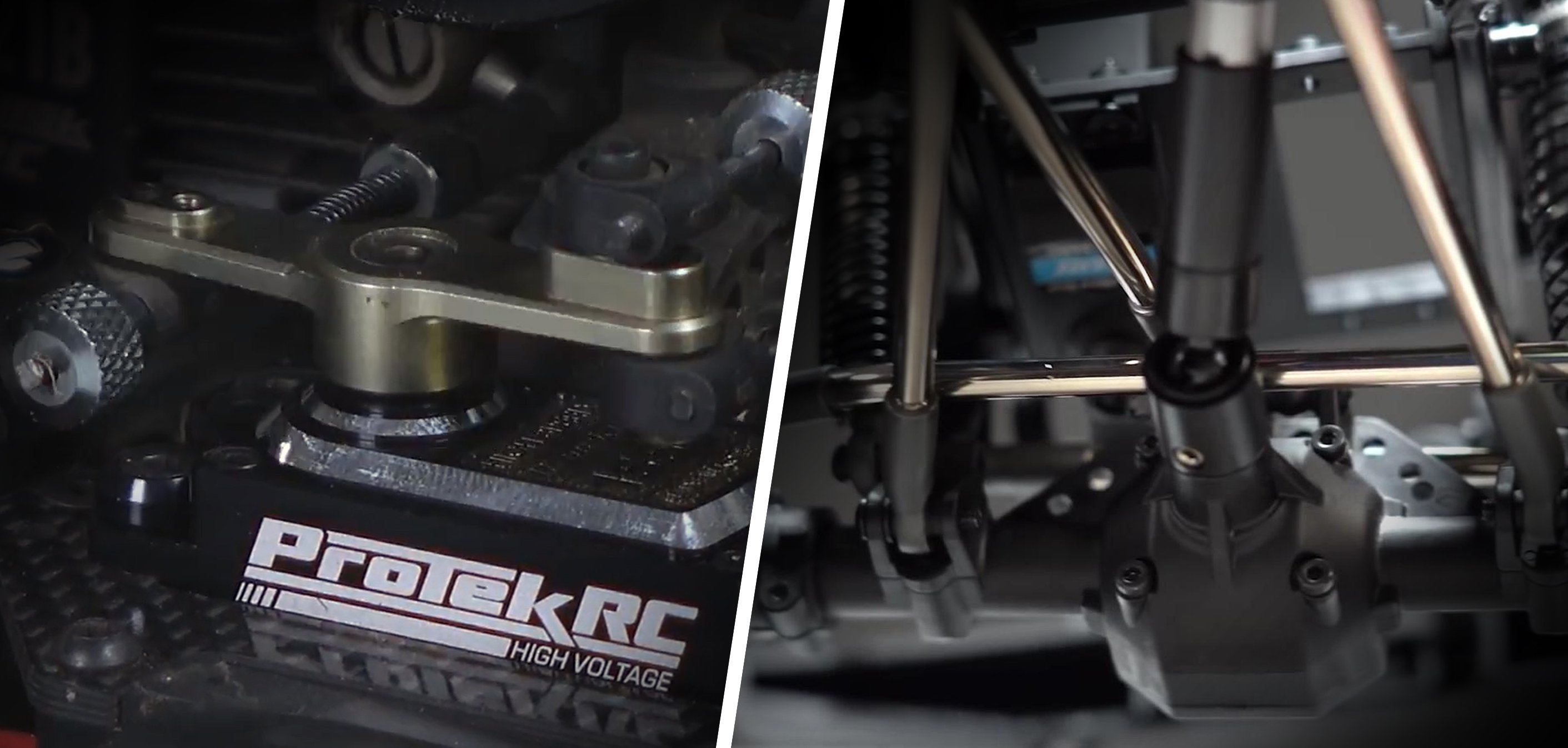
As we mentioned, steel isn't as heavy as brass, but it's way stronger. Steel parts don't flex, they're not affected by the weather, and they don't lose their tolerances easily. Sometimes steel parts are offered as an alternative to a plastic part, like a steel spur gear or steel transmission gears. And because those steel parts are so damn strong, they're great upgrades for high-performance bashers or high torque needs, like for rock crawlers and trail trucks.
However, steel hop-ups aren't very common. Your vehicle probably already comes with the necessary steel parts in key areas, but you may find hardened steel gears available or hardened steel hinge pins, things like that.
Titanium RC Parts
The last material that we will mention is titanium, and it's one of the most exotic metals available. Like aluminum, titanium comes in a wide variety of different alloys, with grade five probably being the most common that we see in radio control. Grade five is also known as 6AL-4V; it is extremely strong and lightweight. In fact, it has one of the highest strength-to-weight ratios available.
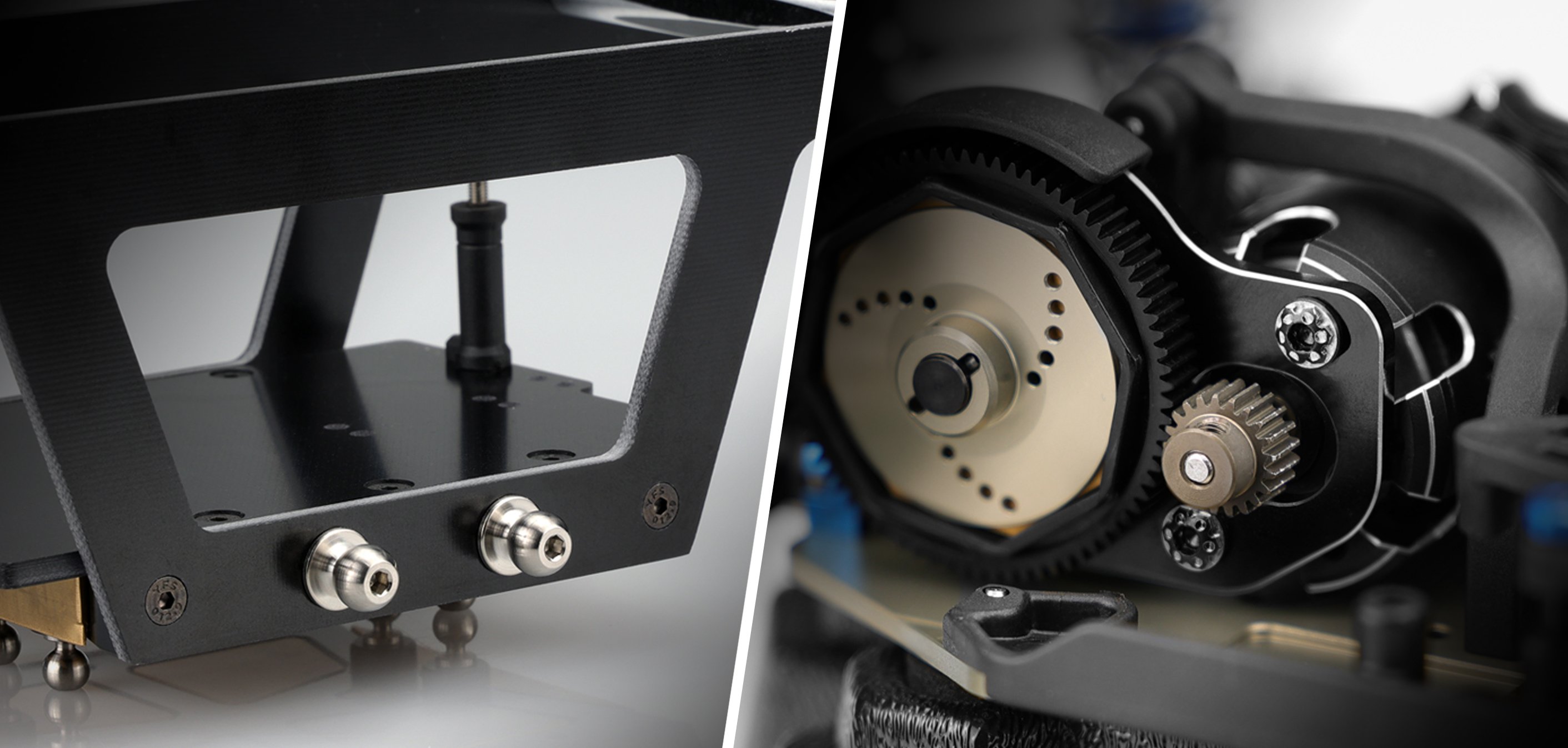
Since titanium part production is intensive, costly, and generally machined, they tend to be the most expensive RC accessories. Because of that, titanium isn't usually made to make bigger parts like titanium chassis—that would be super expensive. So instead, titanium RC parts are typically smaller bits and pieces in RC, and they're usually the parts that you would use as an alternative to steel. So that means your titanium accessories and hop-ups will probably be parts like titanium screws and ball studs, maybe gears, transmission shafts, nuts, and various hardware things like that.
Titanium parts also hold their tolerances well. They're not affected by the outside temperature, and they do not flex under impact. Instead, a nasty collision will cause titanium to shear off, or it'll break off, but sometimes it can also bend. Still, machine grade five titanium upgrades are some of the best out there for exceptional strength while being virtually weightless. These parts are great for the high points in your vehicle when you want to reduce all that weight and lower the center of gravity. For example, you can use titanium screws in conjunction with carbon fiber shock towers or something like that to reduce the weight up high in your vehicle.
Summary
There are many different types of materials, and their strength or grade can vary. Still, in general, you will find that the aluminum upgrades will be a hop-up or accessory for some plastic parts. Carbon fiber upgrades will be an alternative to a plastic or aluminum part. Titanium parts are usually an alternative to a steel part, and then brass parts are just there to add weight and good looks wherever you can.
We have included wiki links throughout this article, and you should check them out for more information on these metals and various alloys—it's fascinating stuff.
Watch Brett's Review
RC Parts Materials
Watch "The Differences Between RC Parts Materials" on our YouTube channel, and while you're there, be sure to check out our new product reviews, and how to videos.
Featured Items
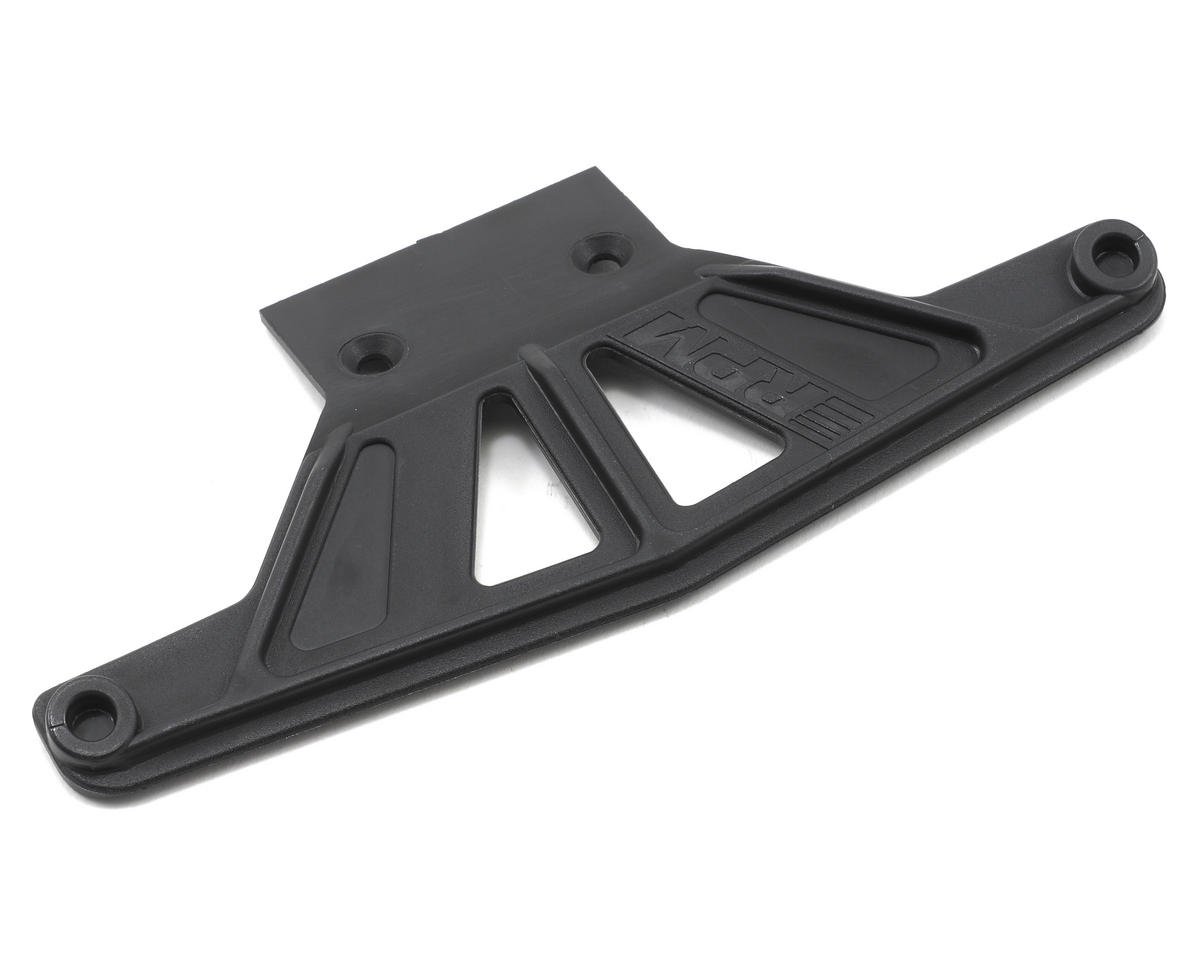
RPM Traxxas Rustler/Stampede Wide Front Bumper RPM81162

RPM ARRMA Kraton/Outcast Front Upper & Lower Suspension Arm Set RPM81482
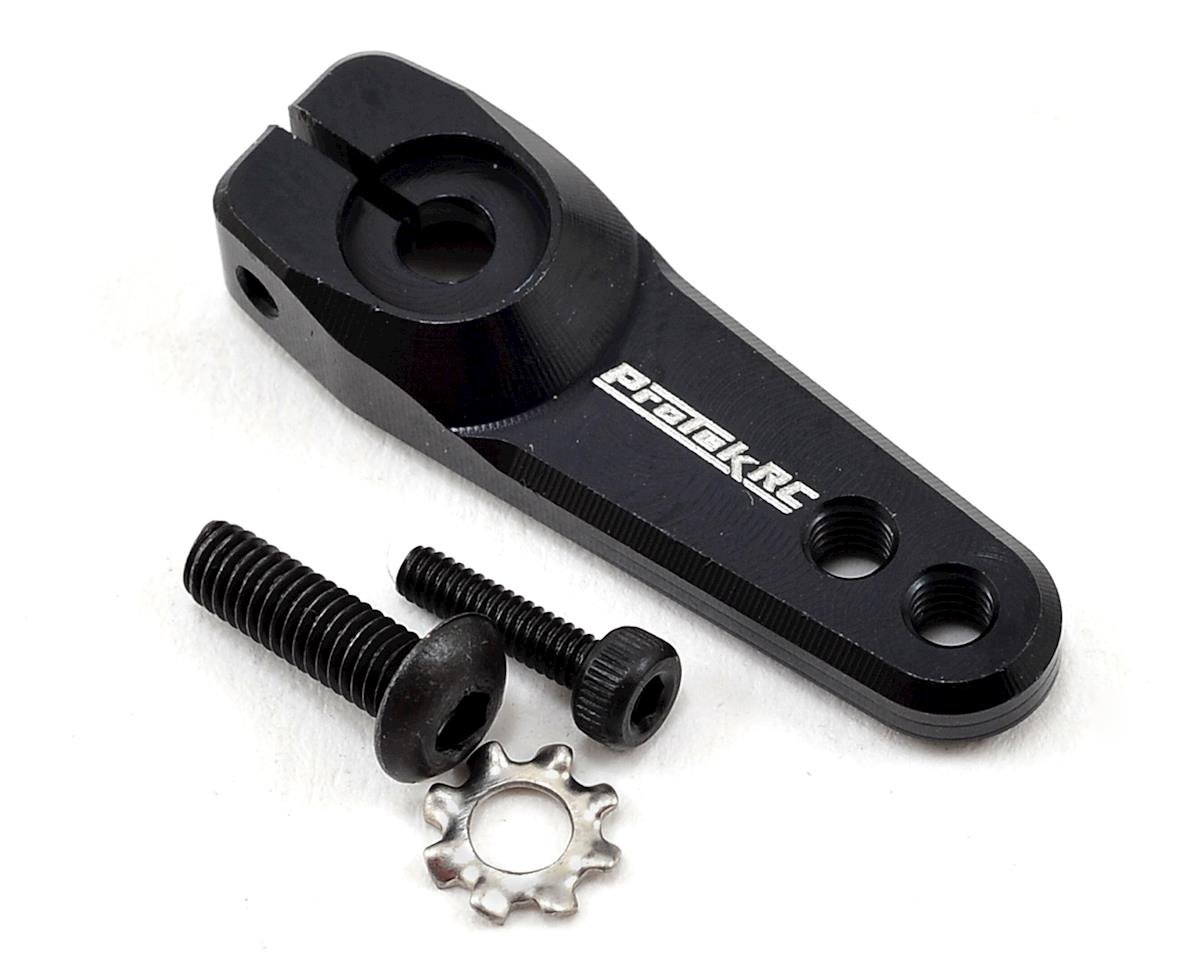
ProTek RC Aluminum Clamping Servo Horn PTK-7819-BK
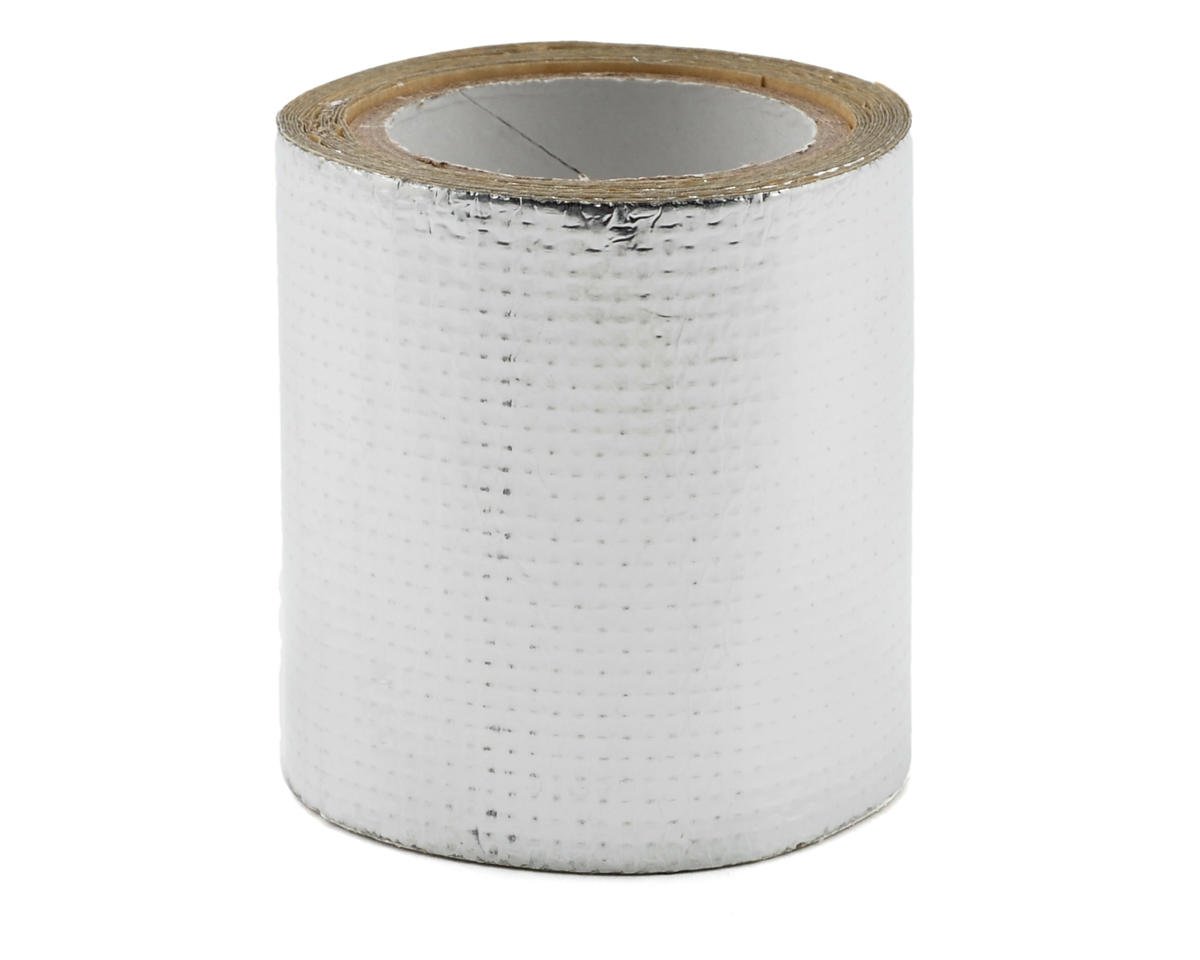
Tamiya Aluminum Heat Shield Tape TAM53351
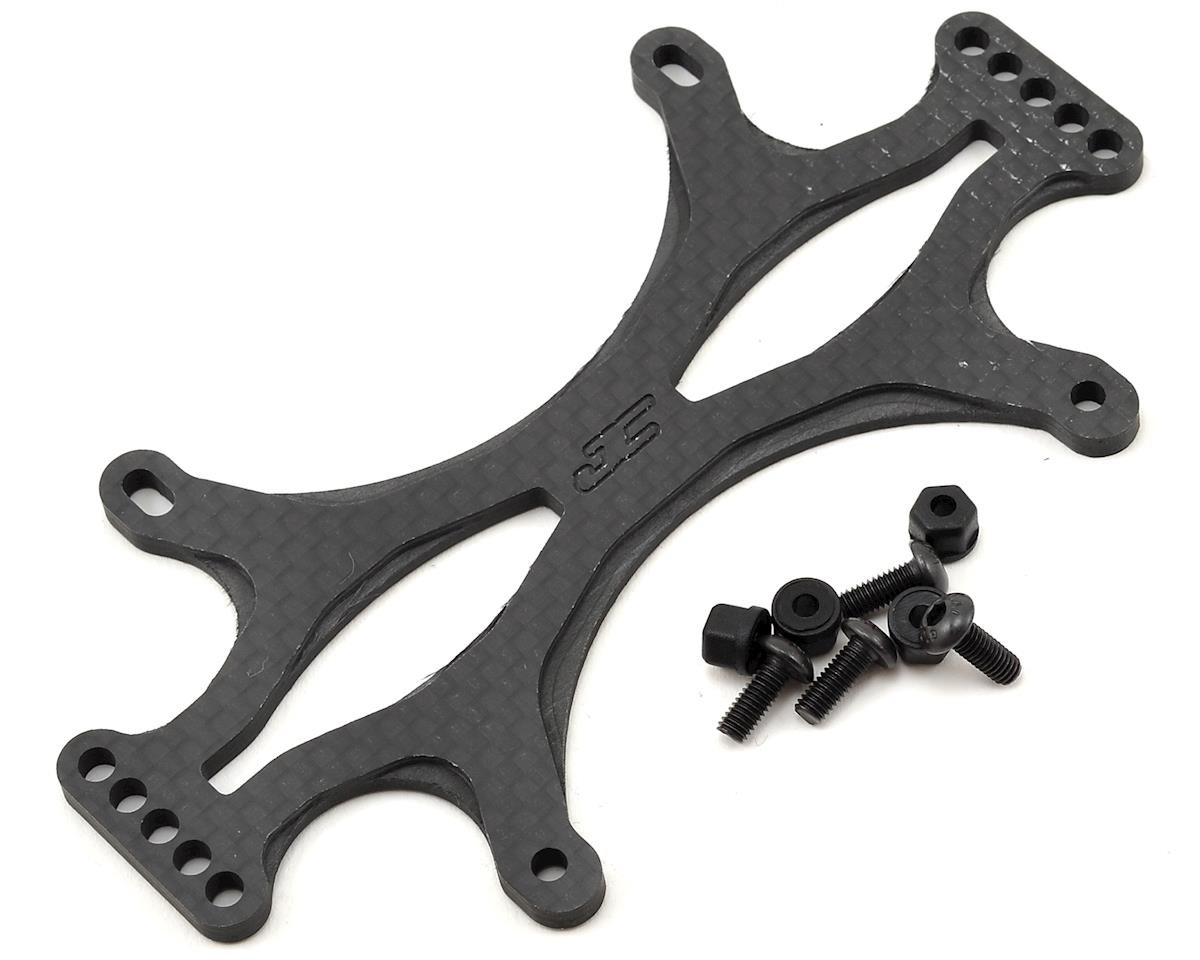
JConcepts B6/B6D Carbon Fiber Battery Brace JCO2562
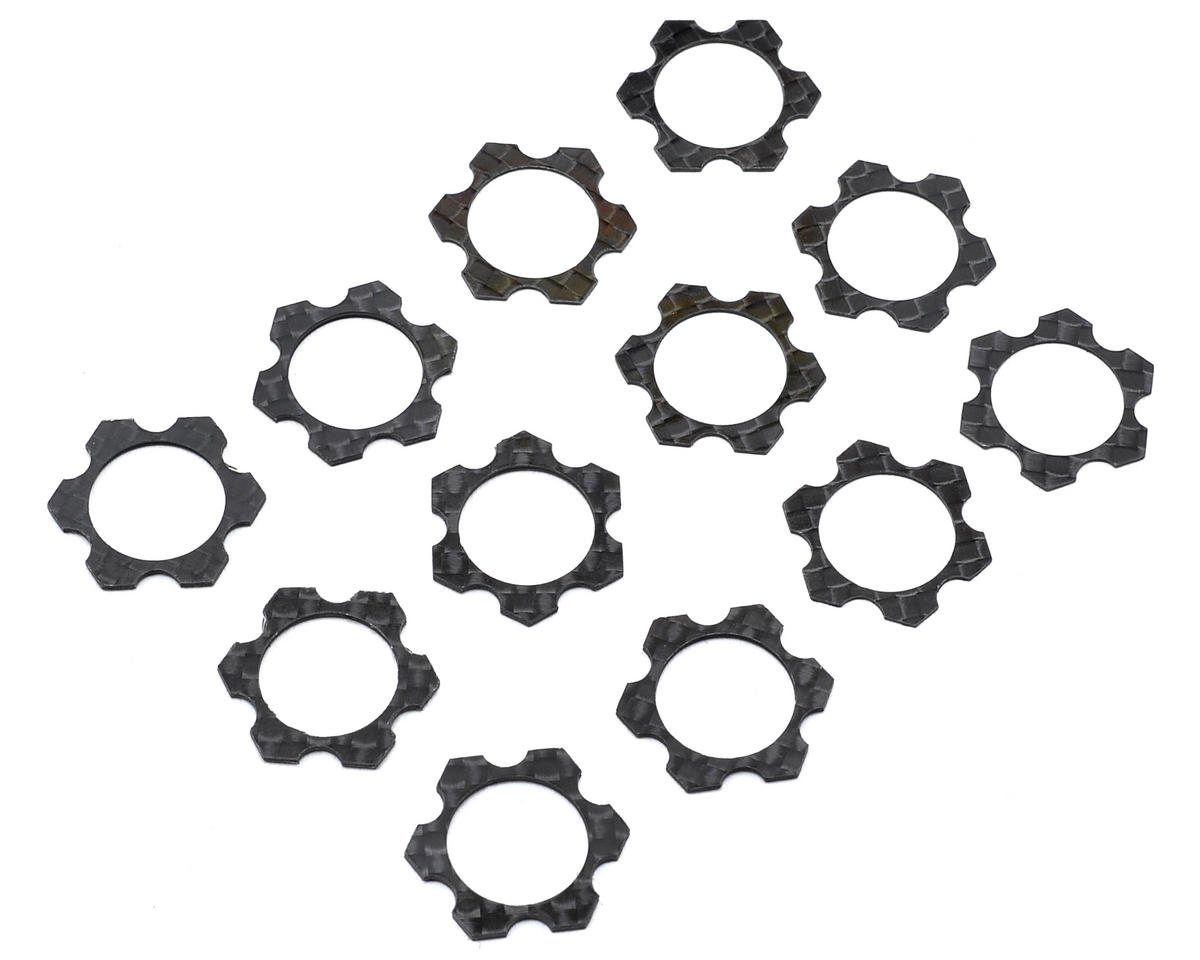
Avid RC 1/8 Carbon Track Width Spacers Set AVD1049-17-SET
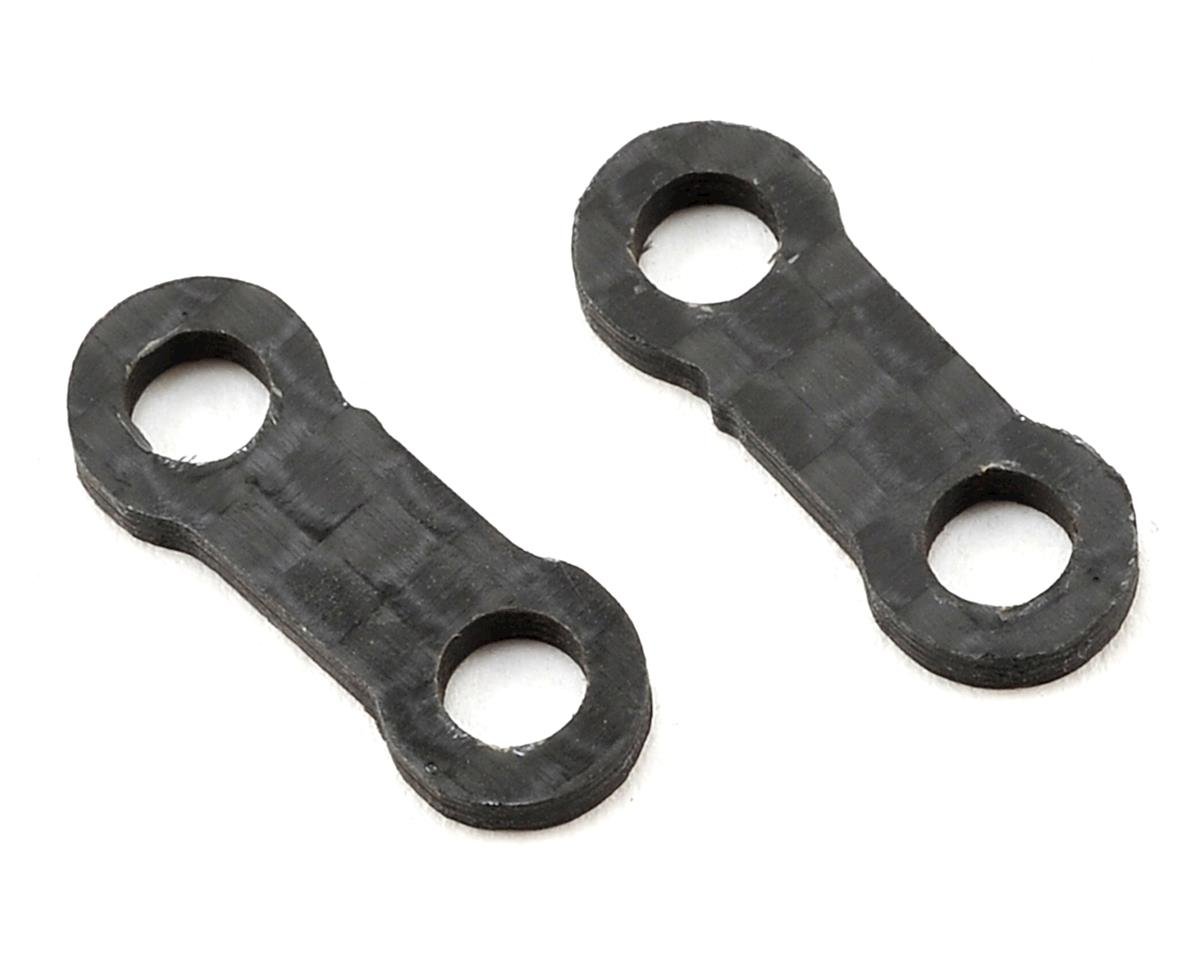
Avid RC 1.5mm Carbon Fiber Servo Mount Spacer AVD1043-SD-15
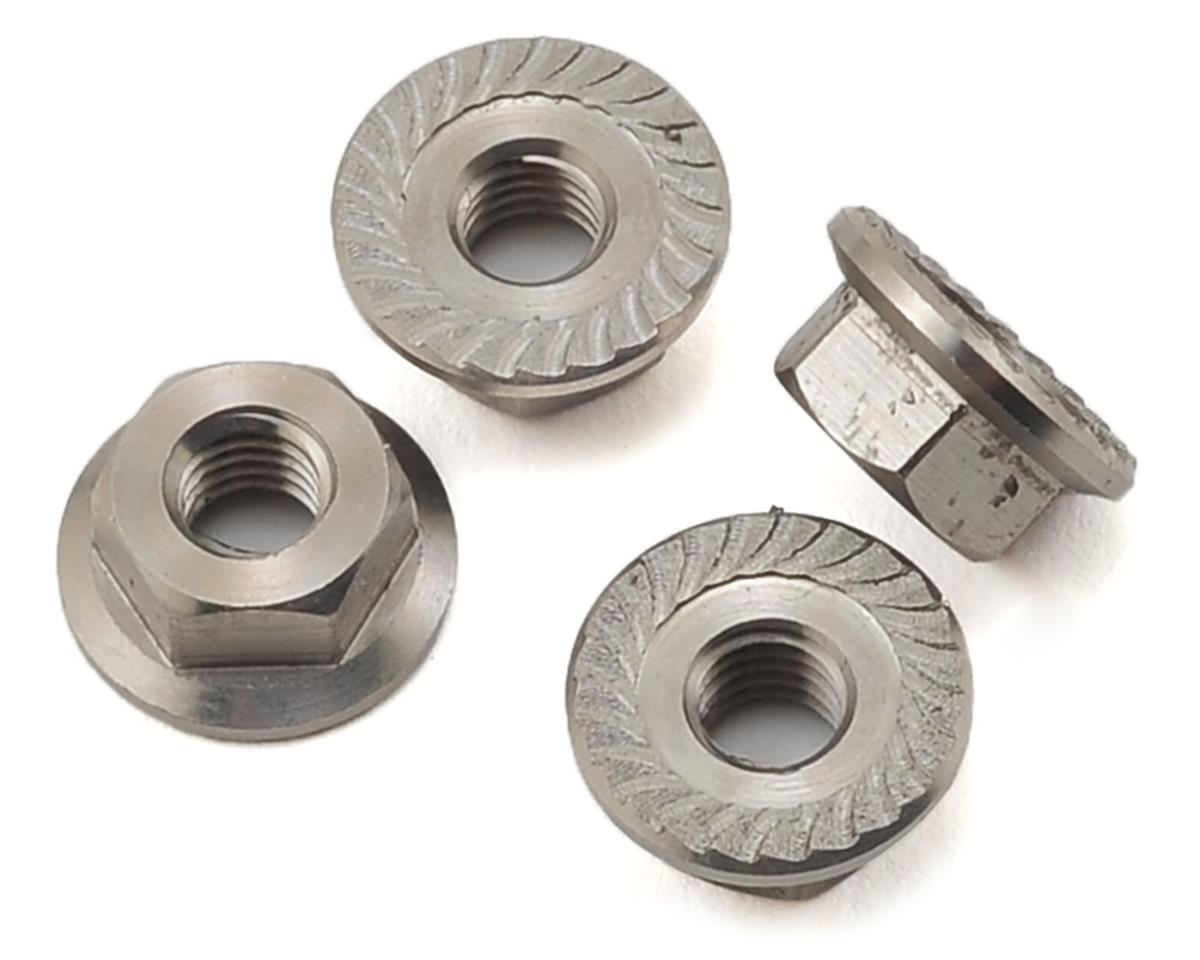
AM Arrowmax M4 Titanium Wheel Nut AMX-030002
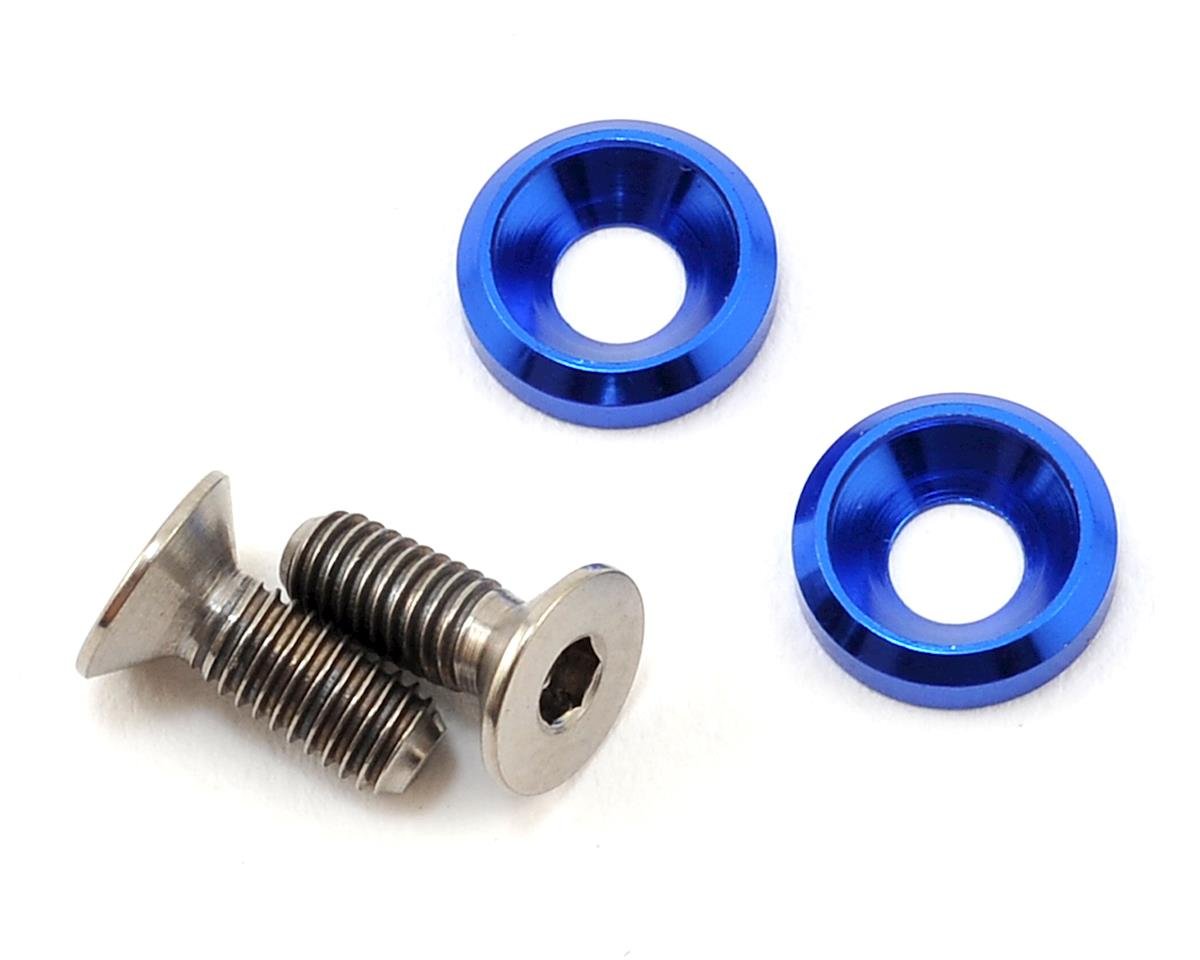
175RC 3x8mm Titanium Motor Screws 175-10401

Kyosho 3x10mm Titanium Button Head Hex Screw KYO1-S13010HT
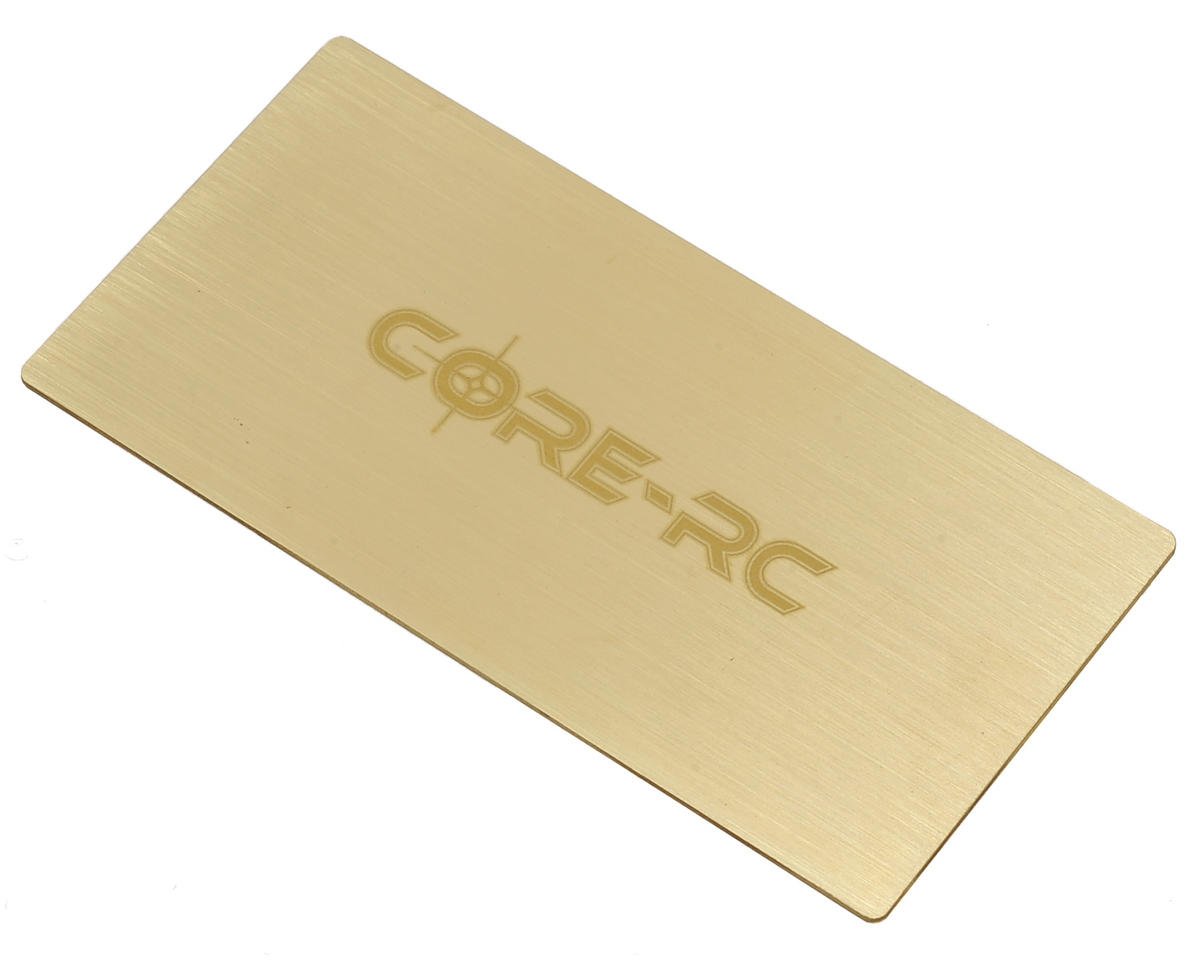
Core-RC Brass Under LiPo Plate Weight CRC-CR519
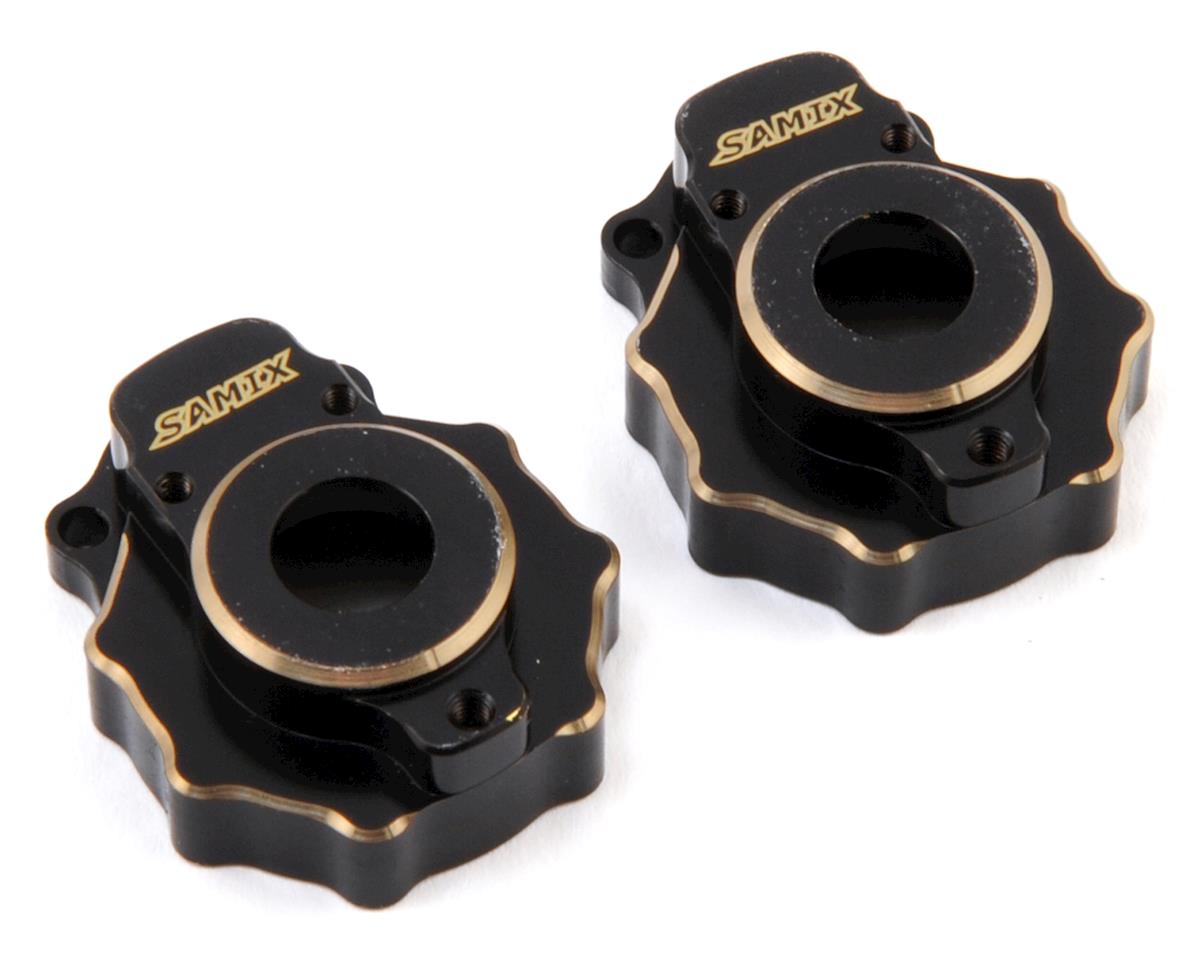
Samix Traxxas TRX-4 Brass Portal Knuckle Cover SAMTRX4-4013


